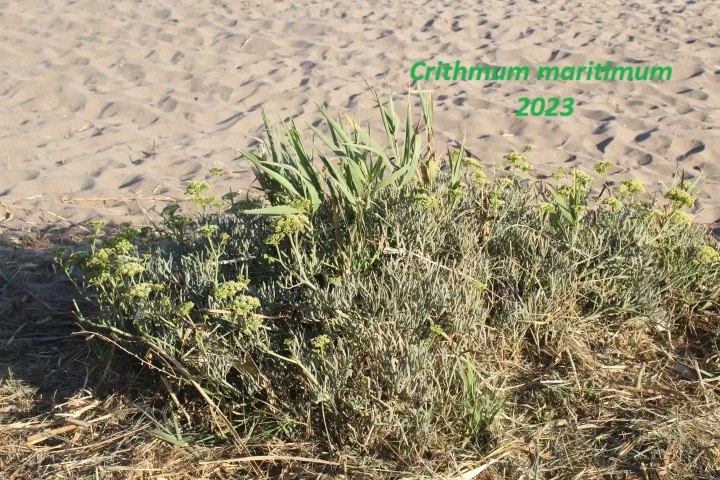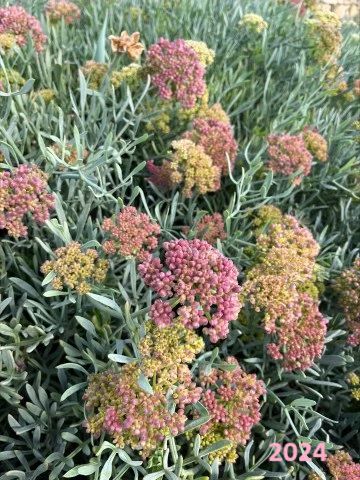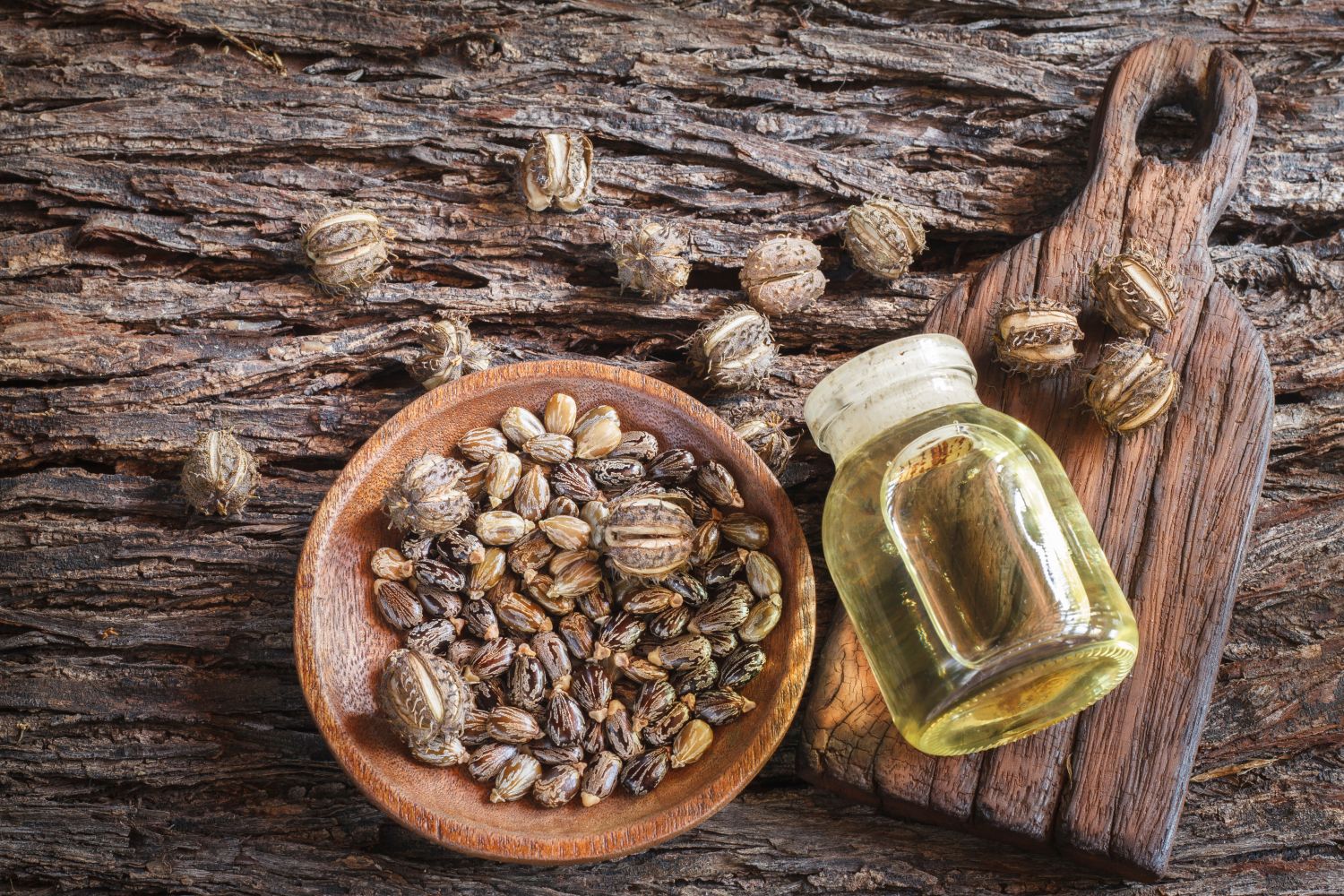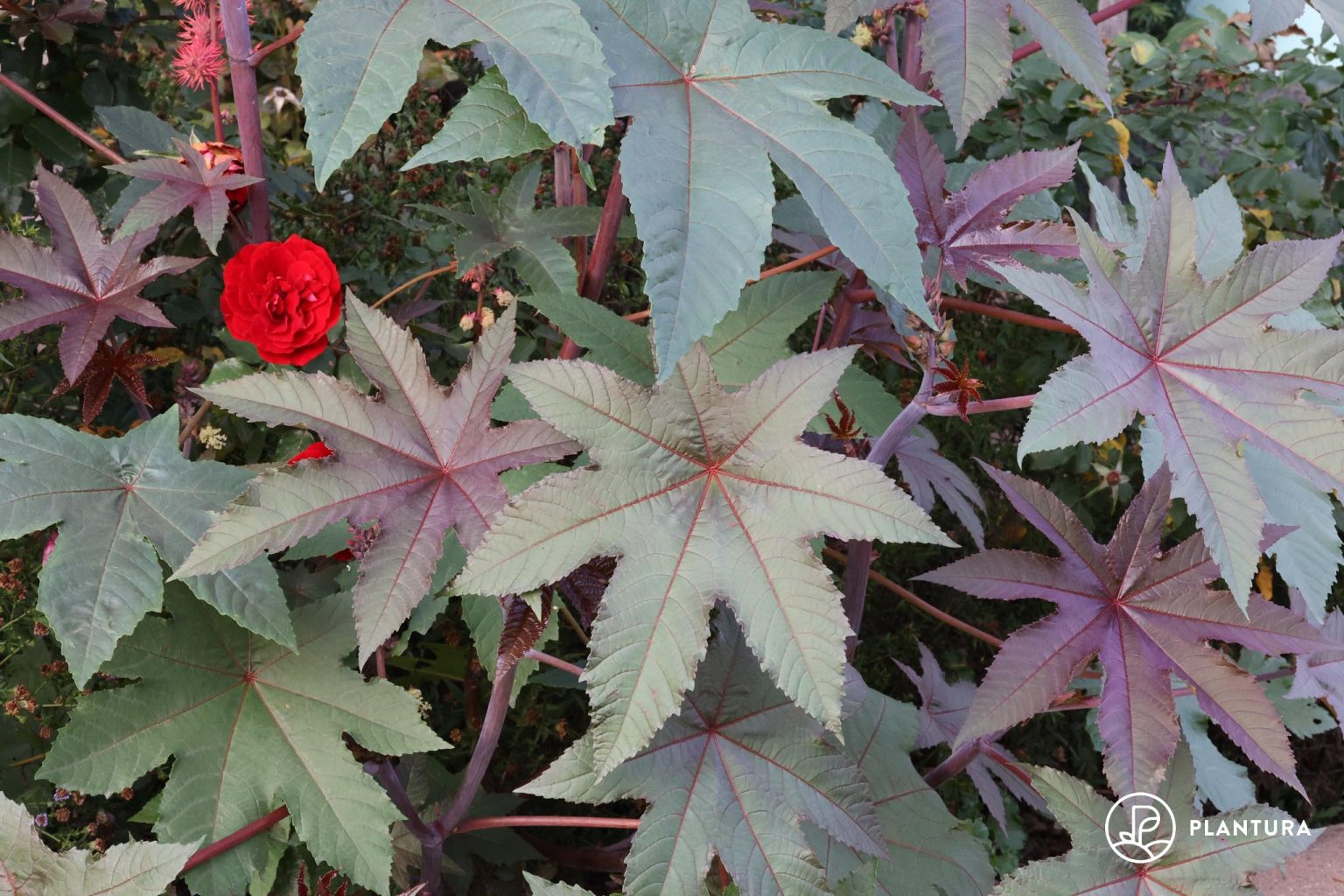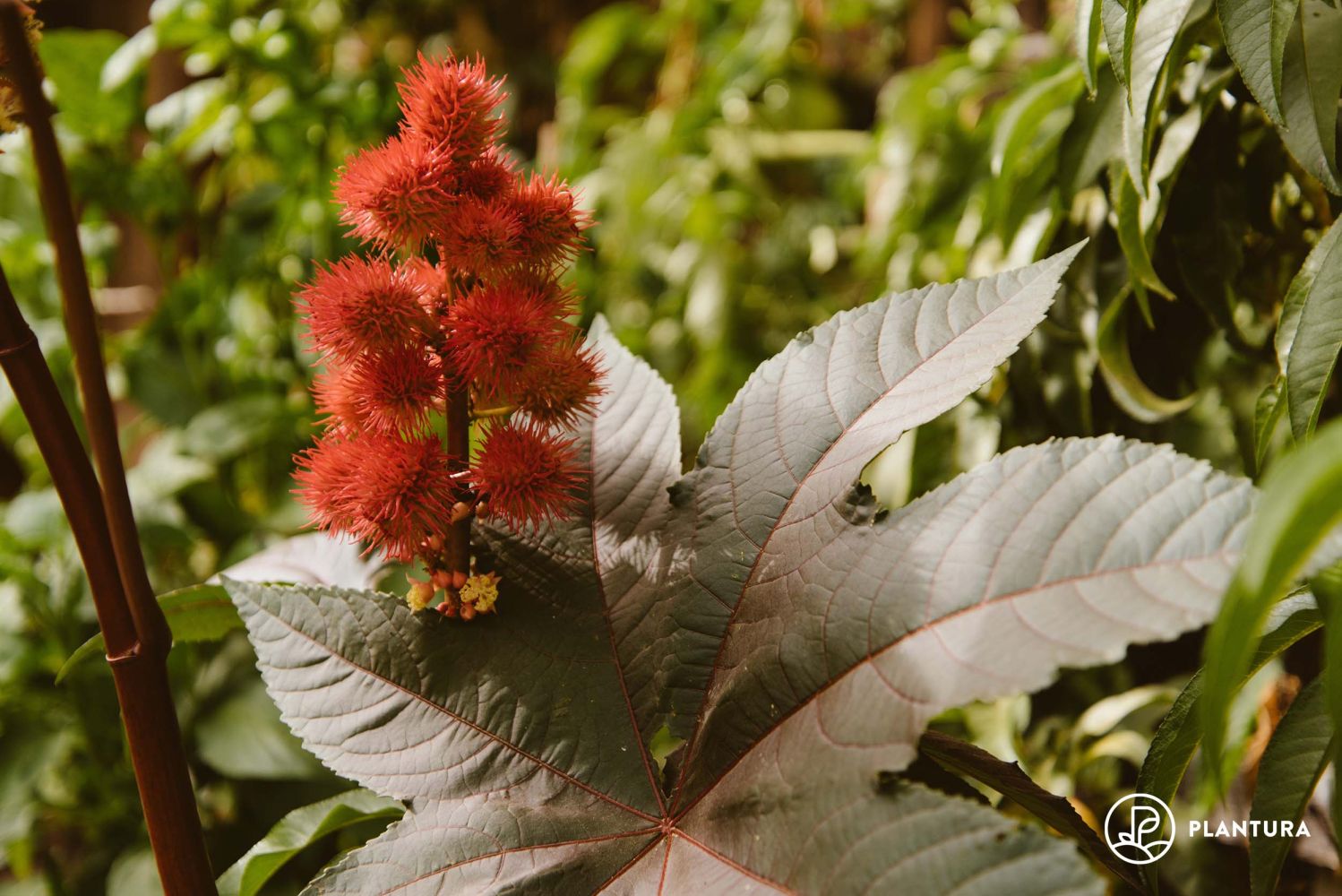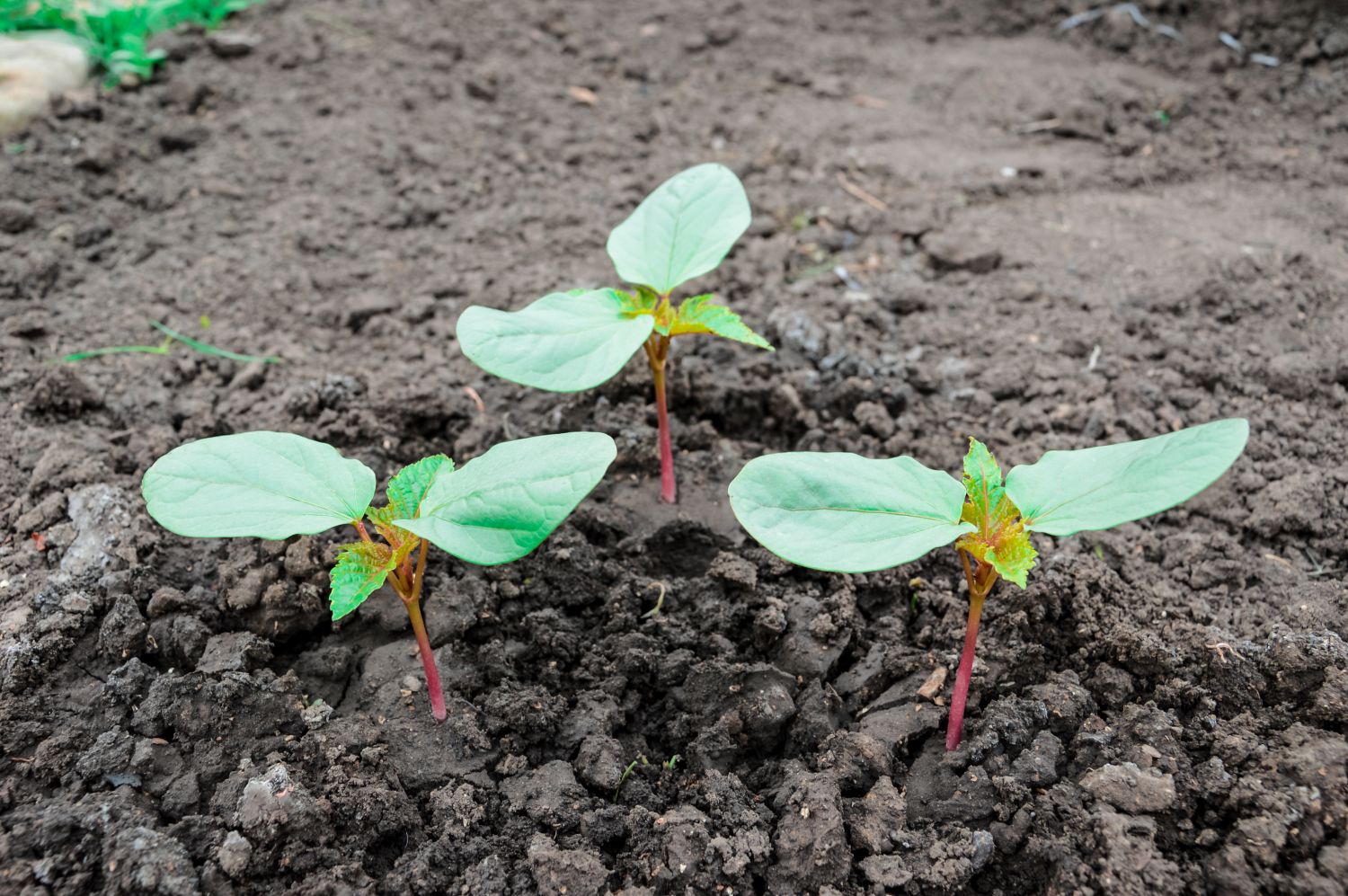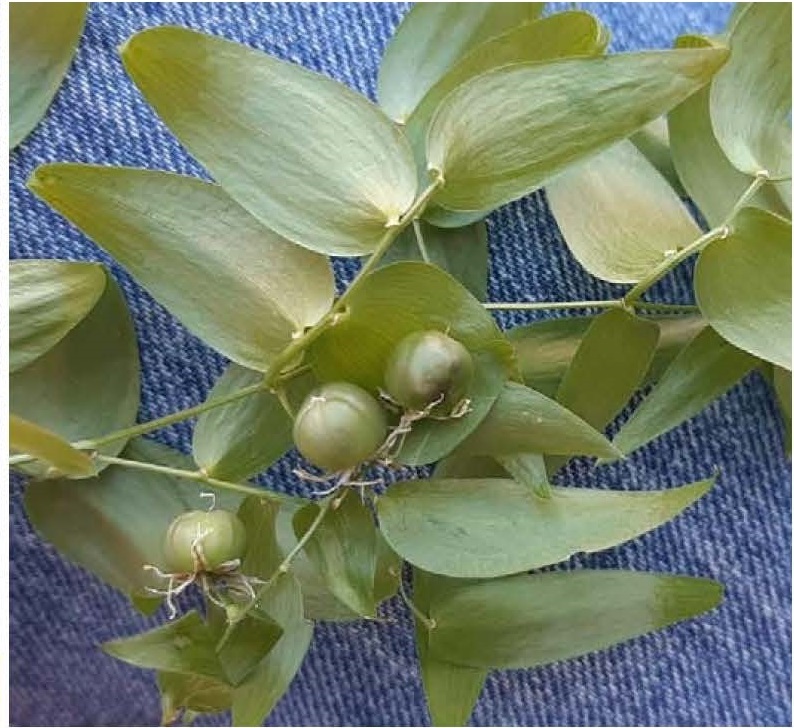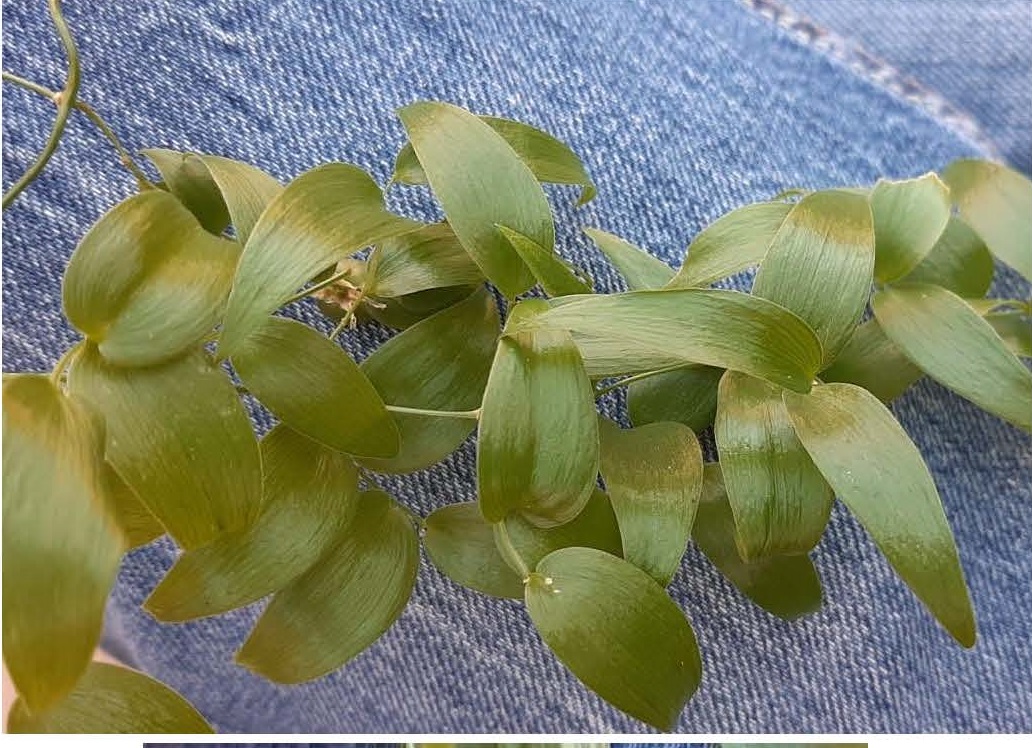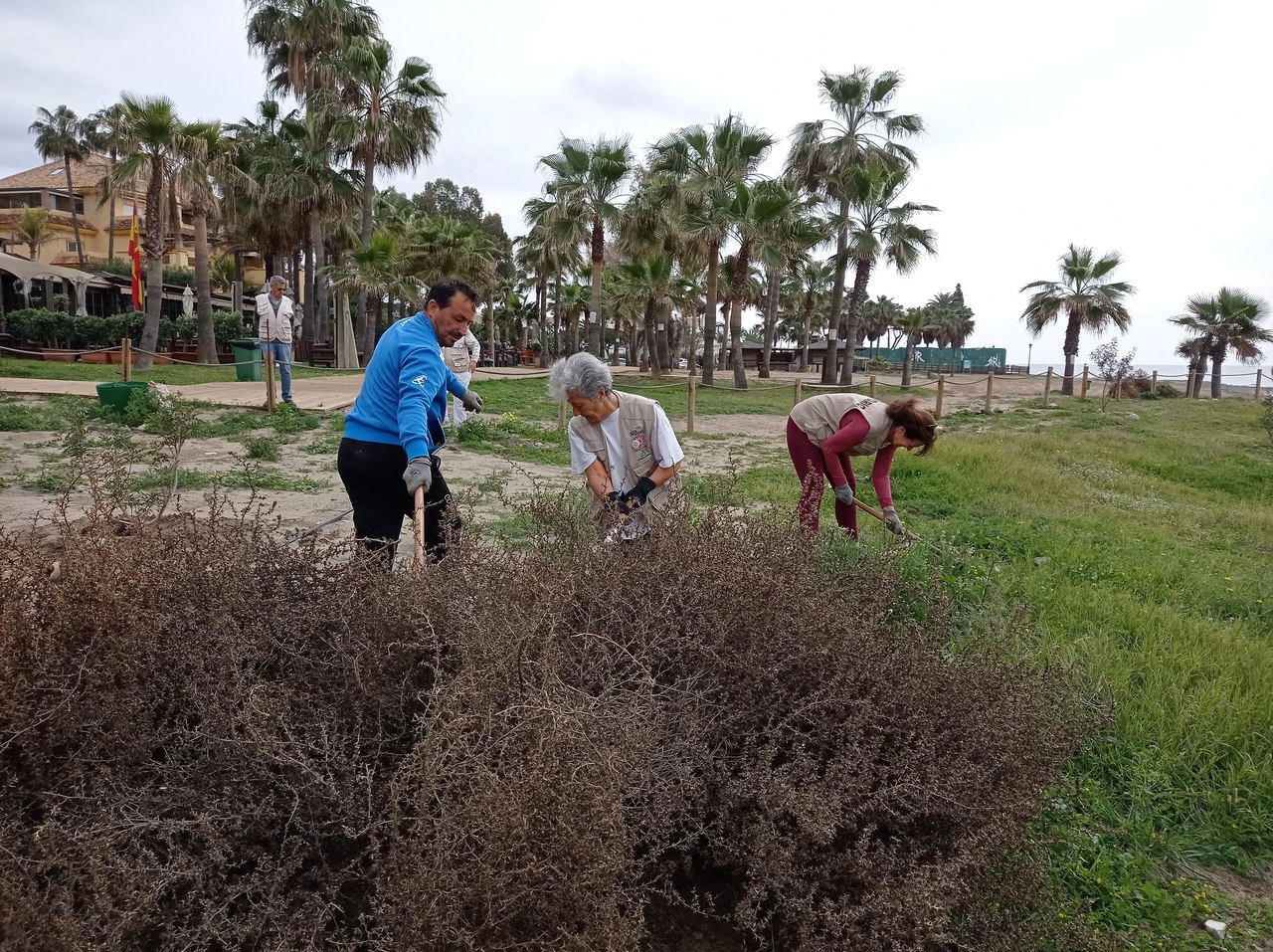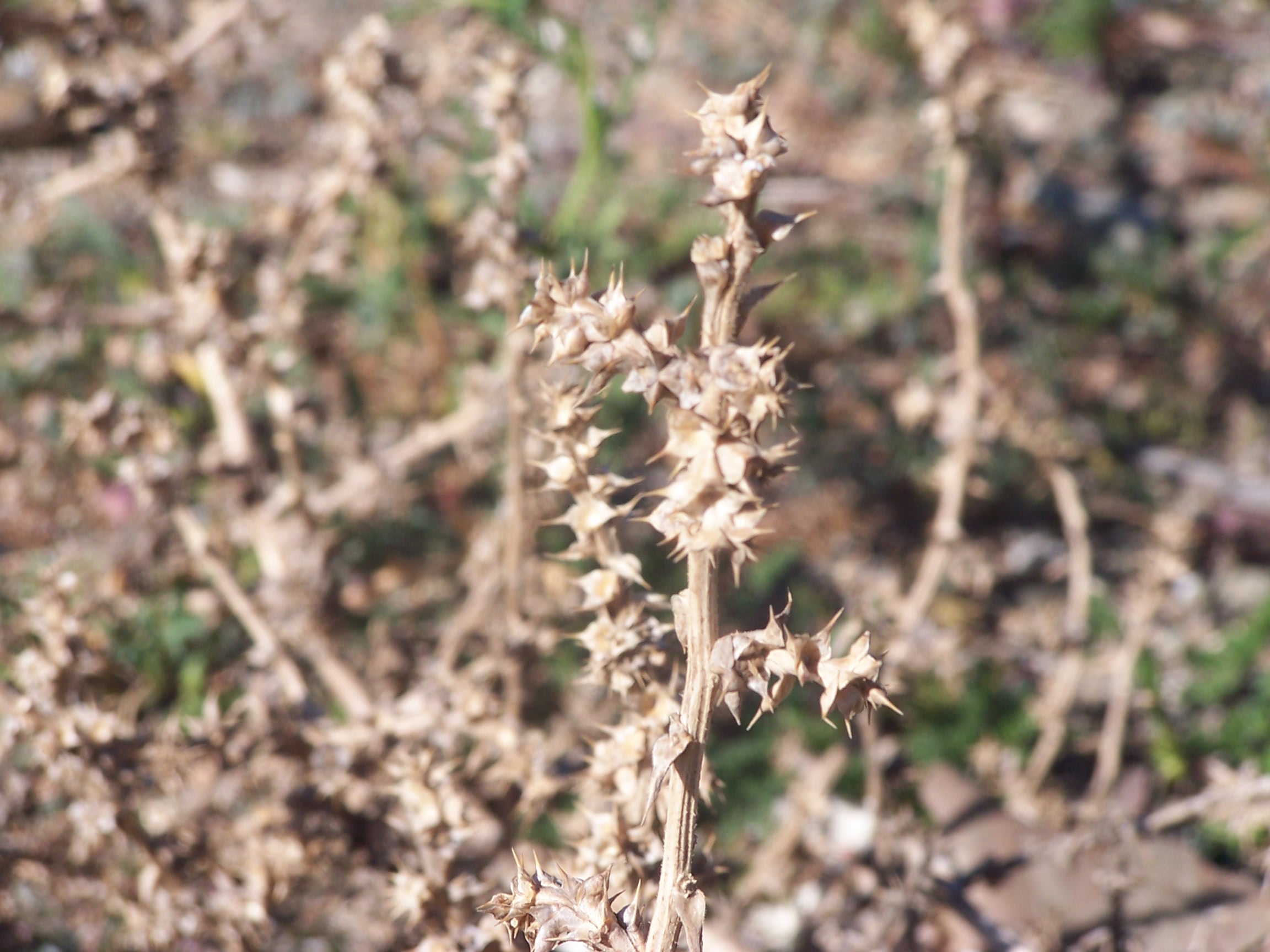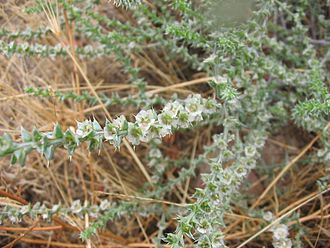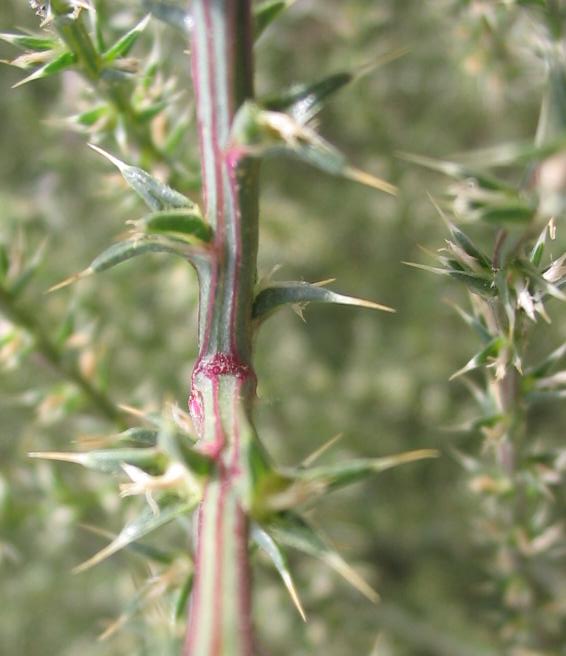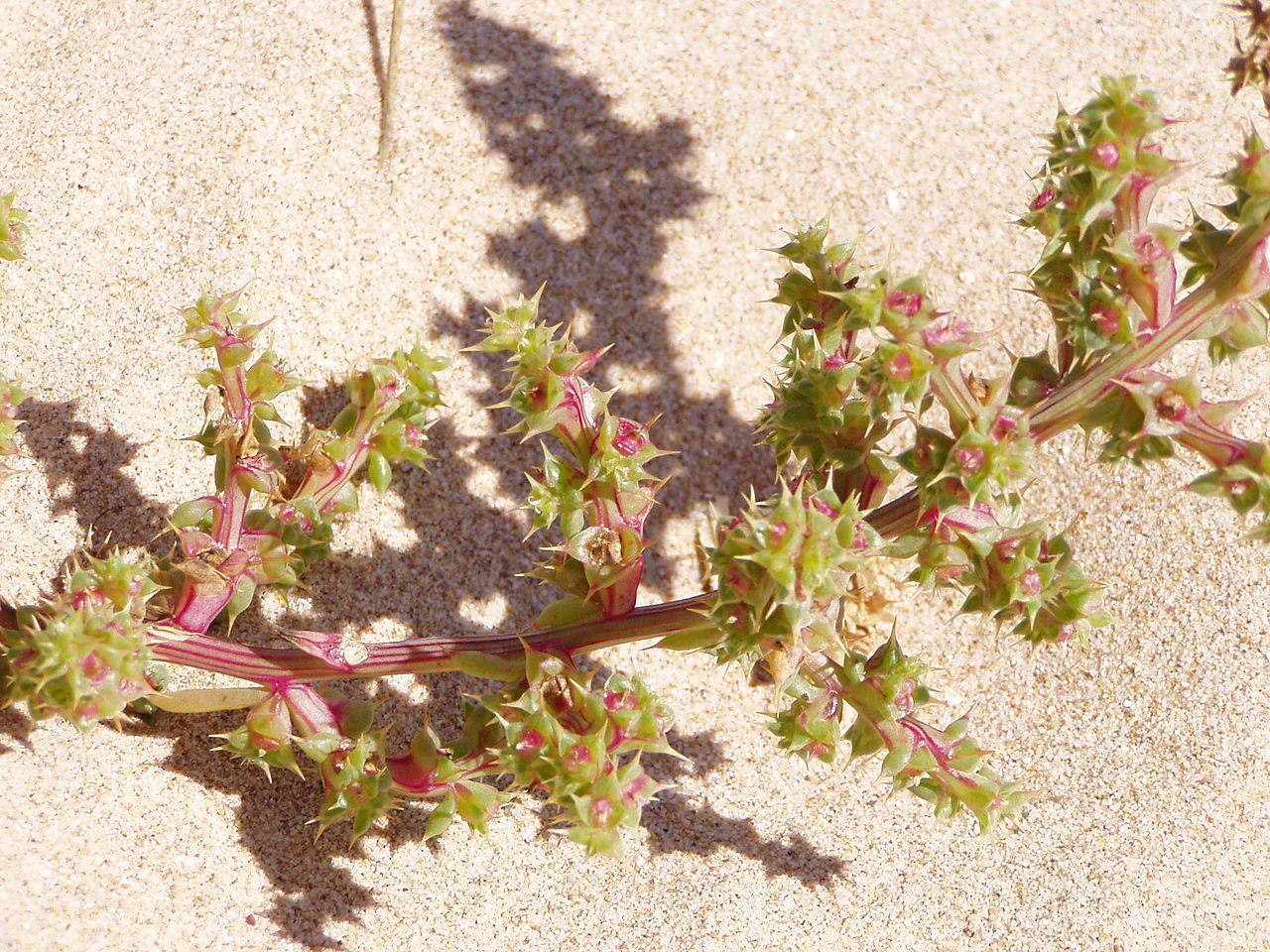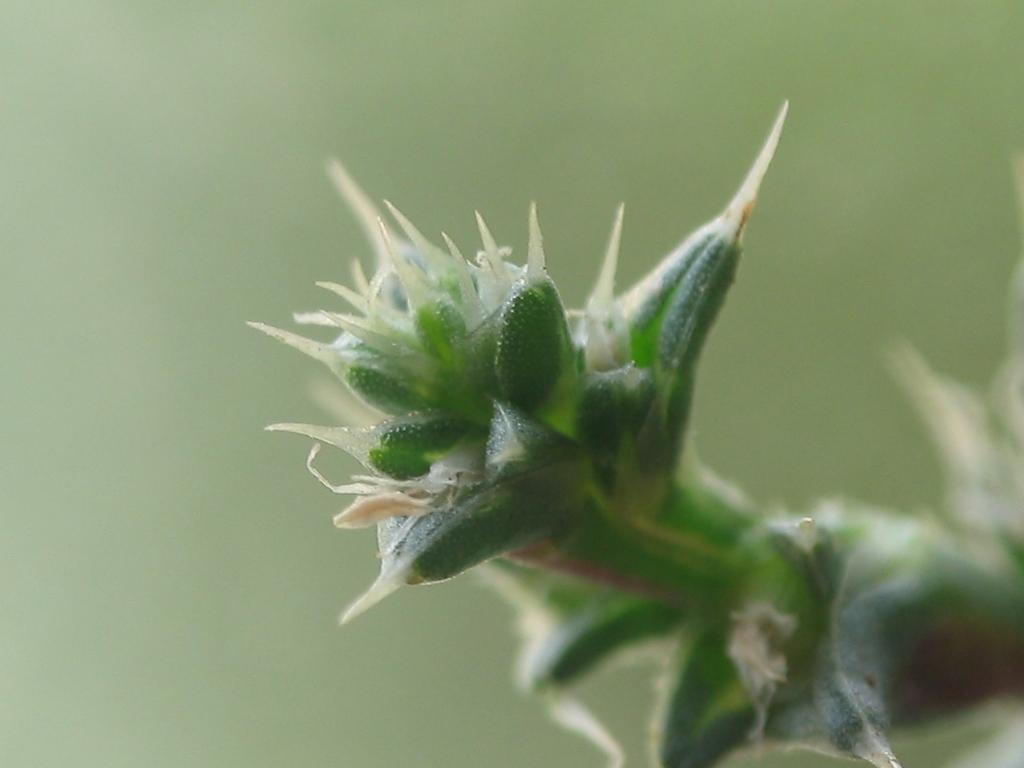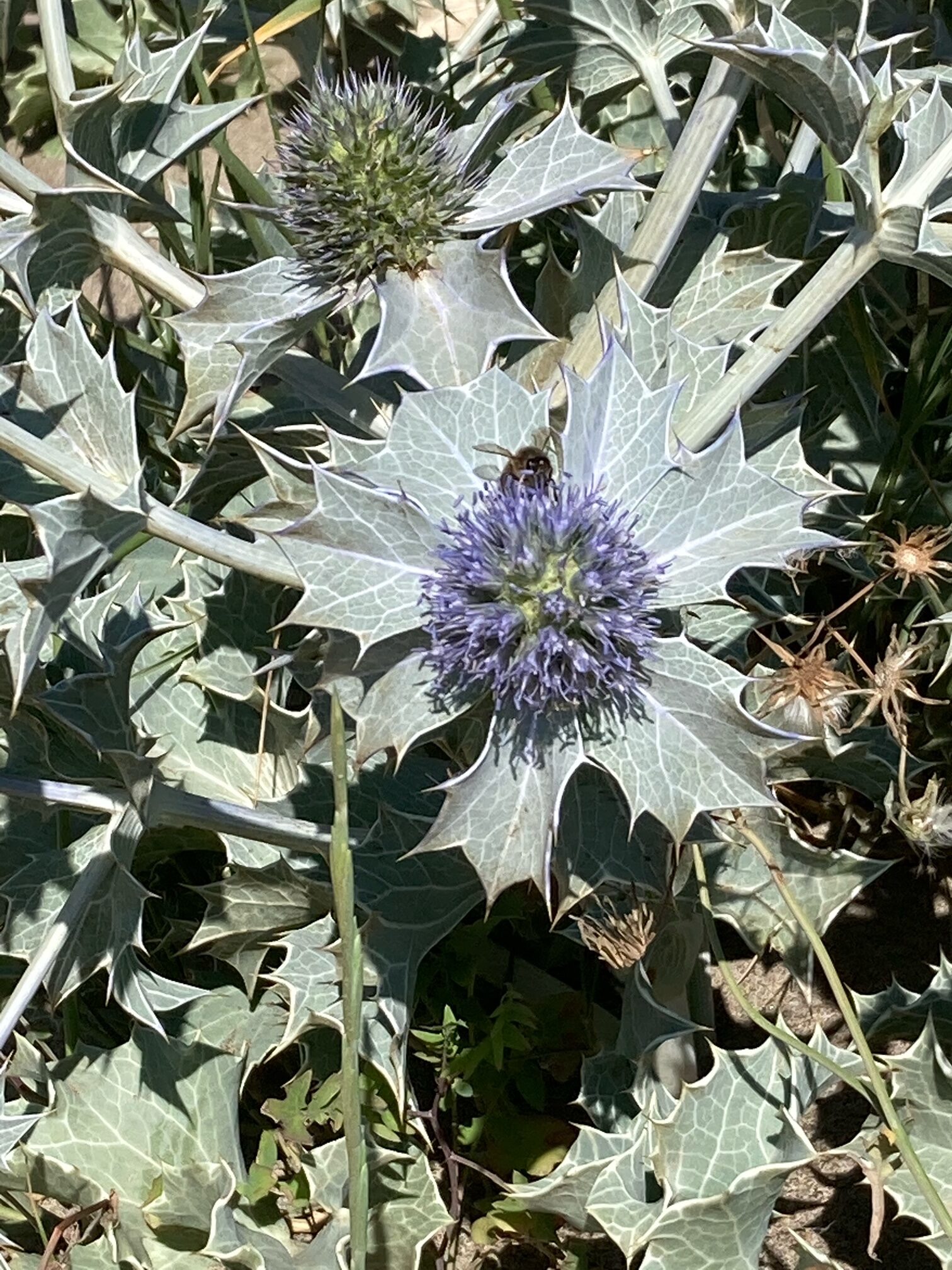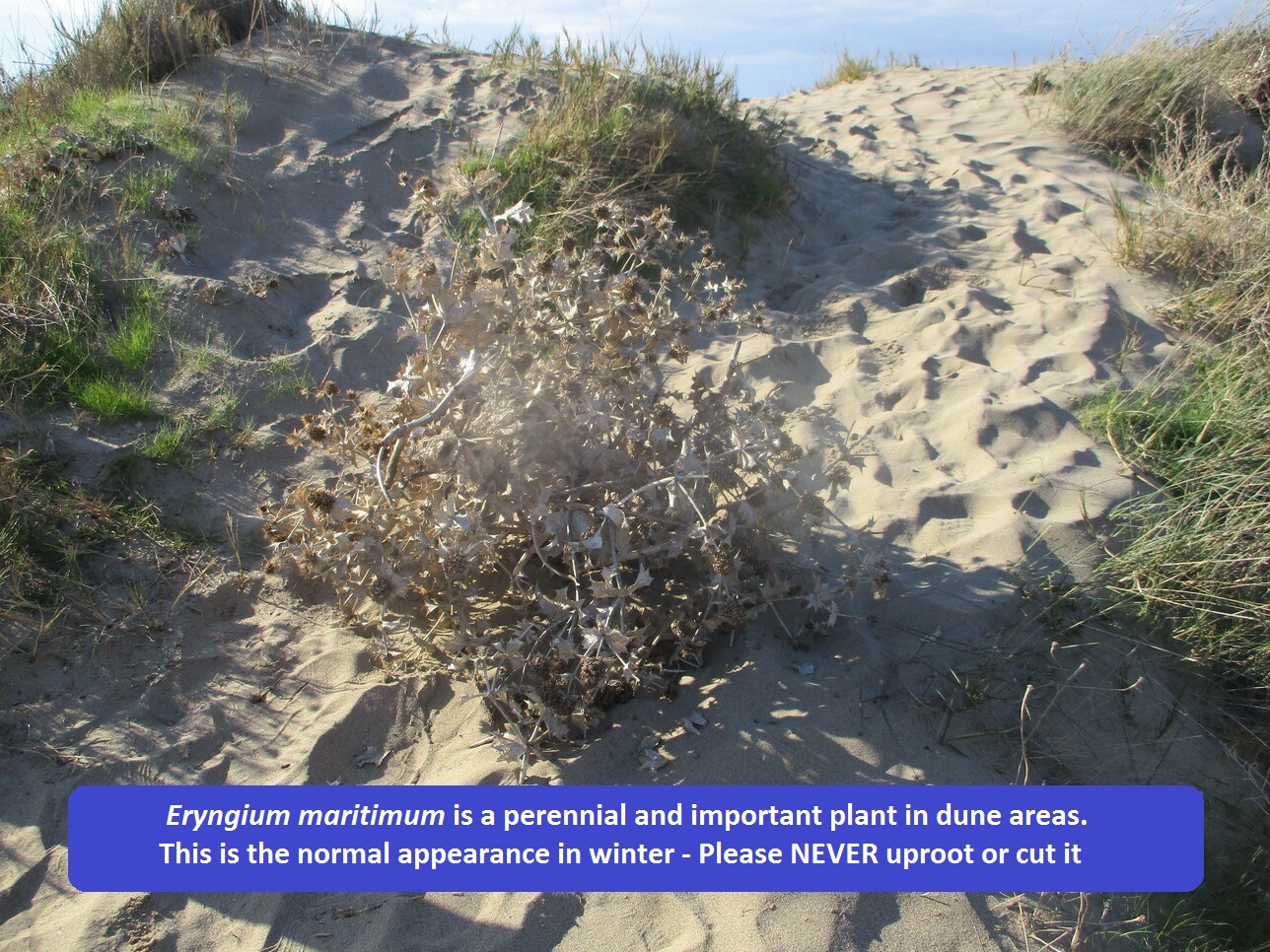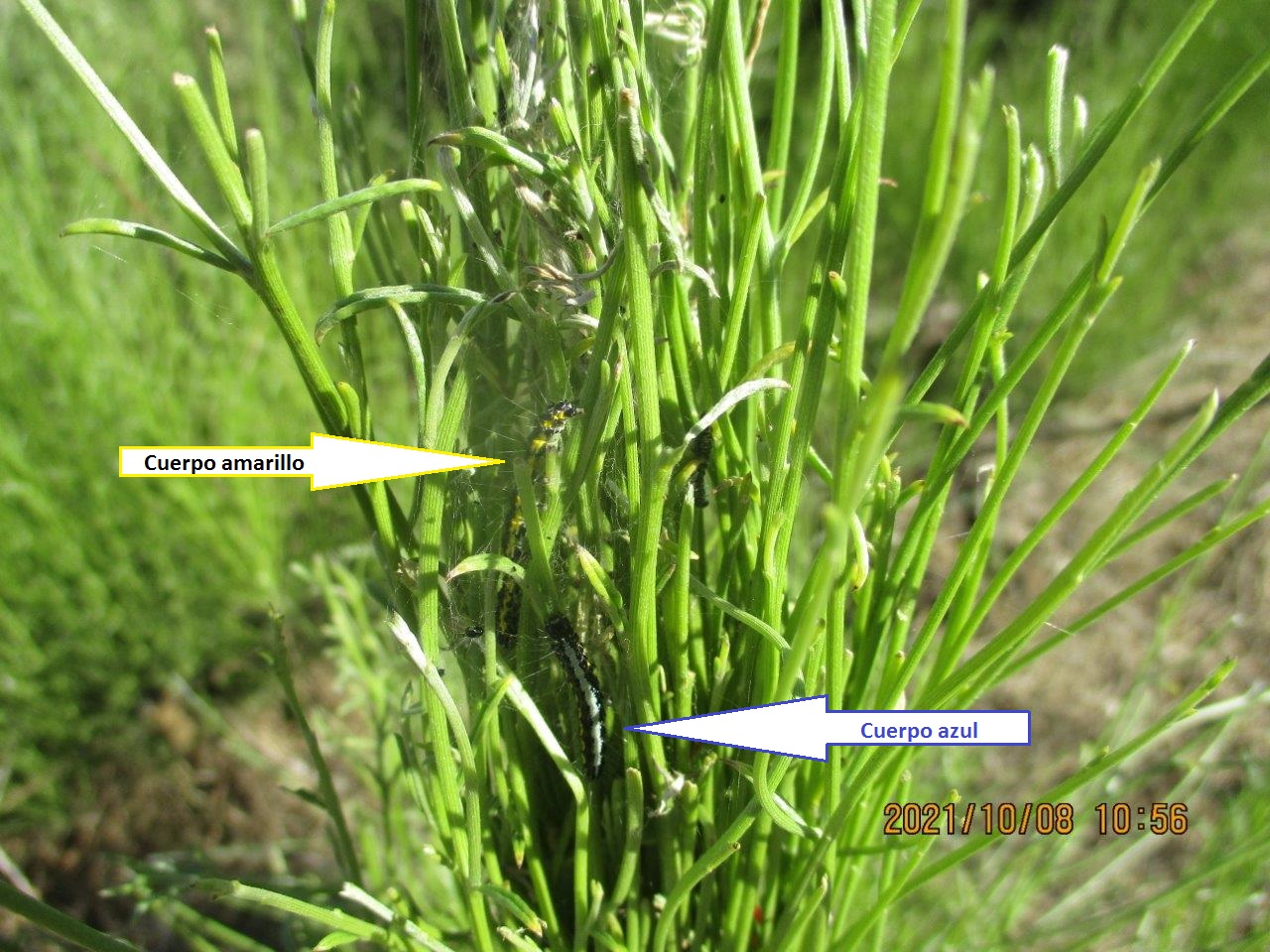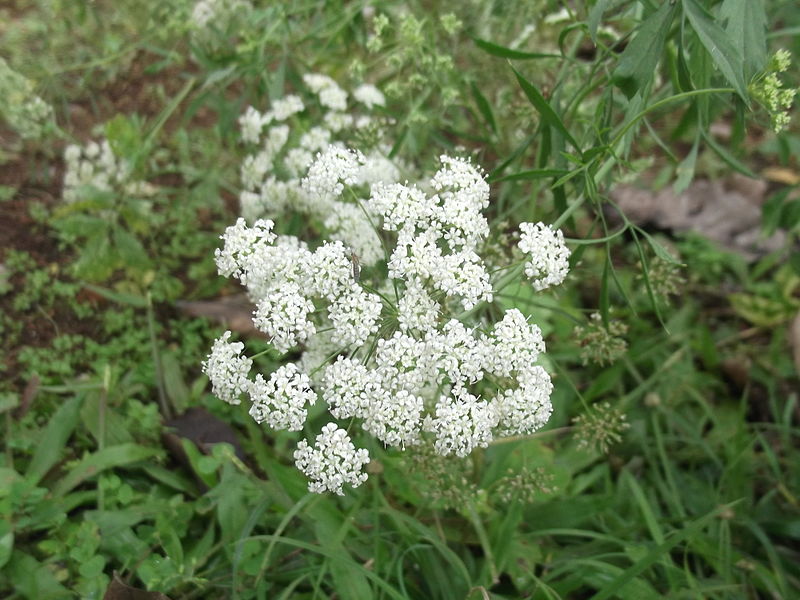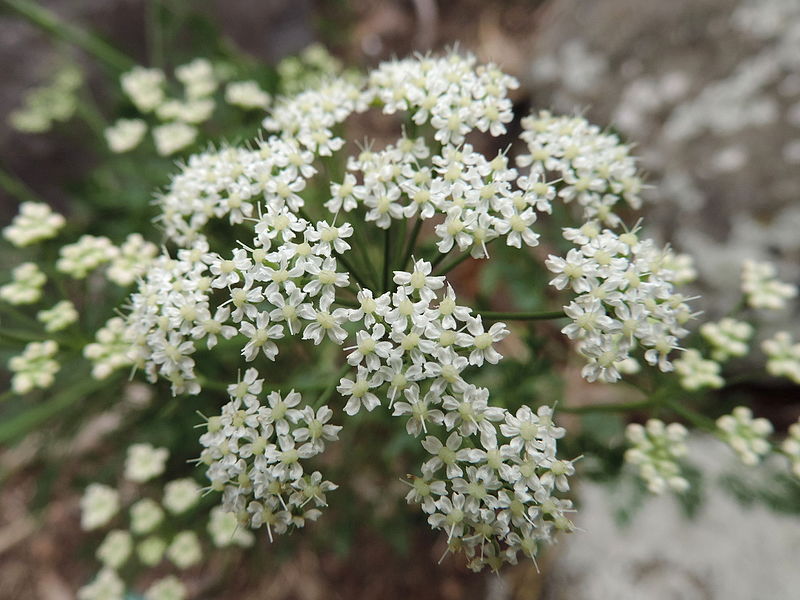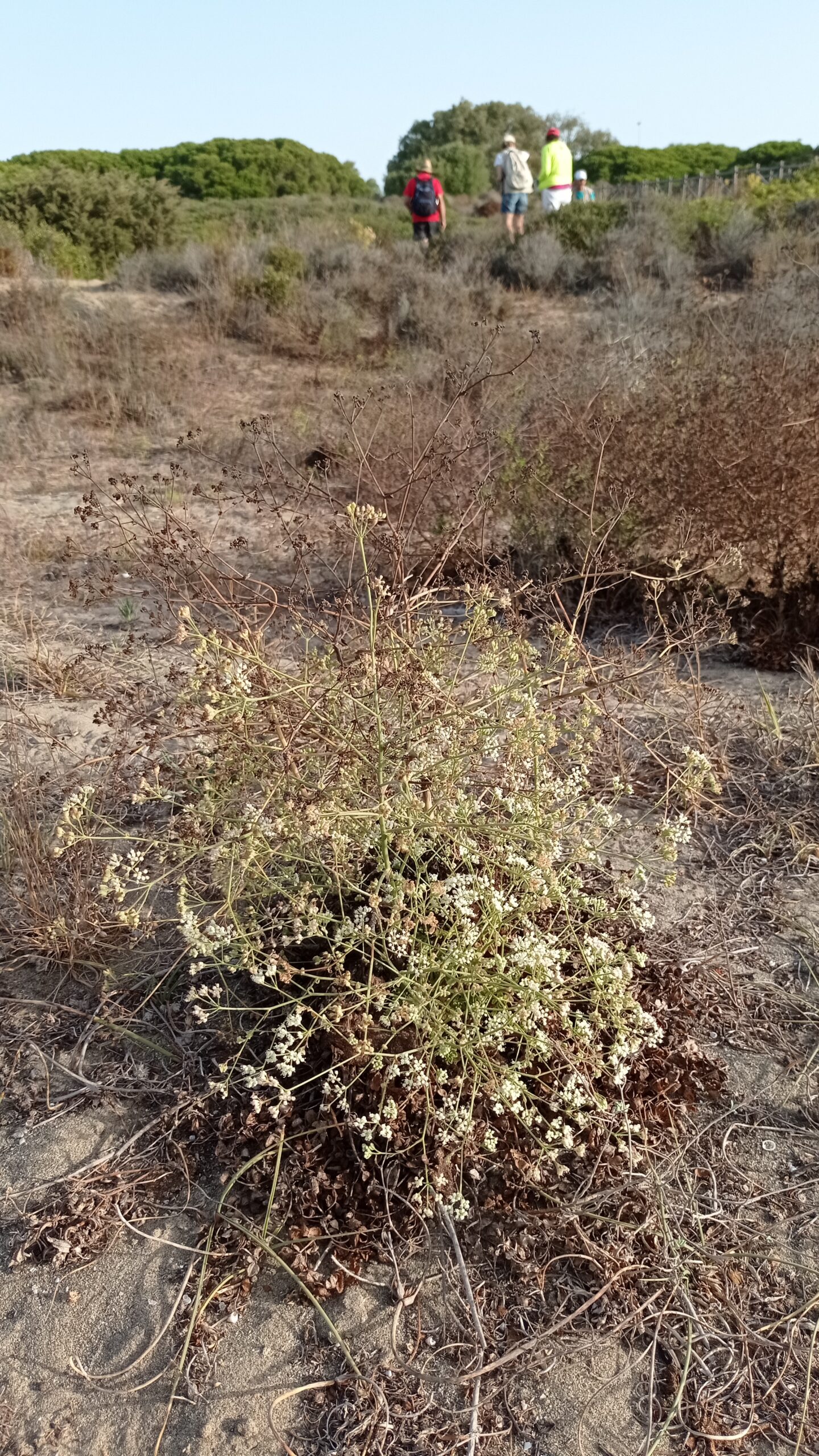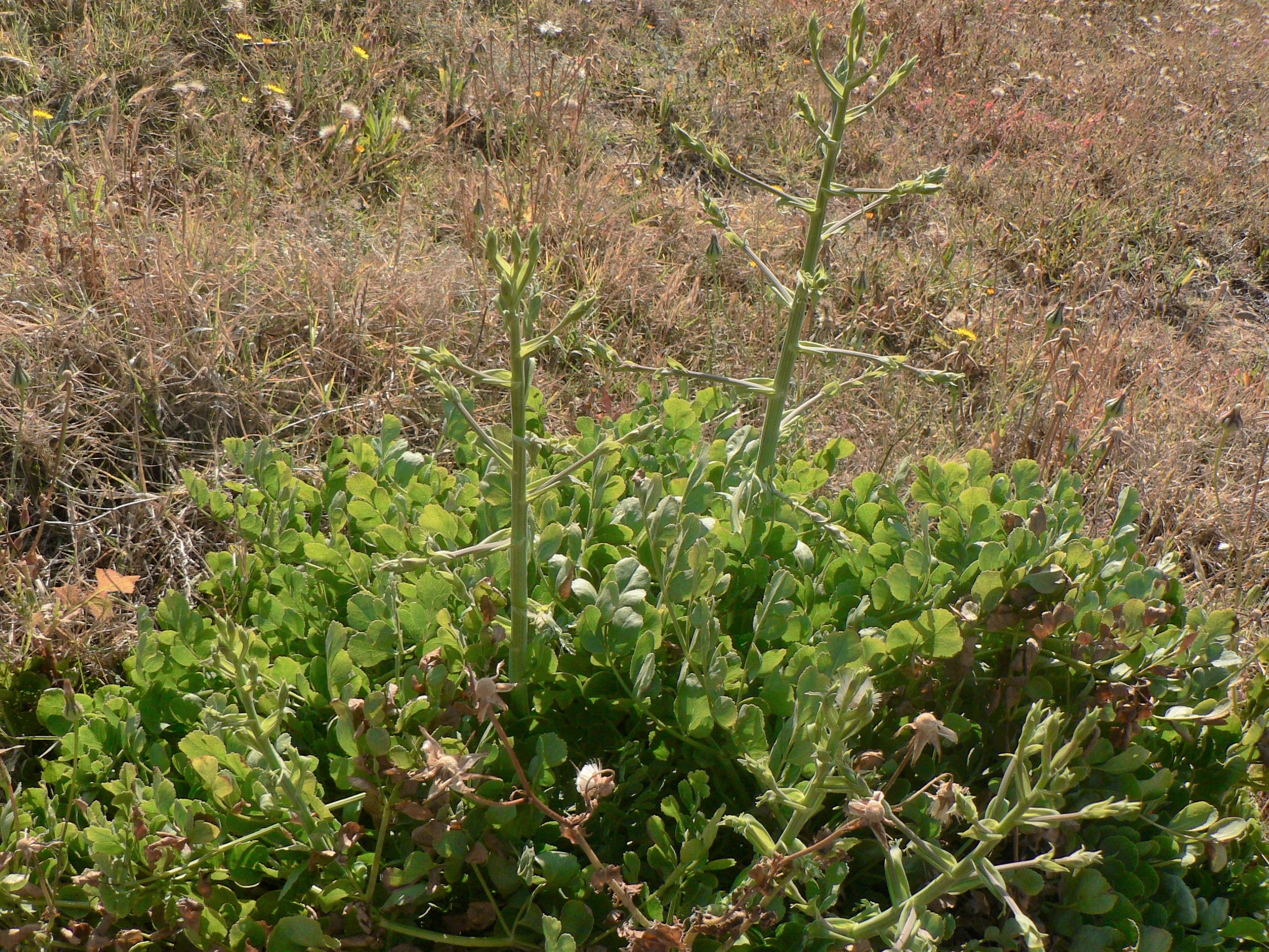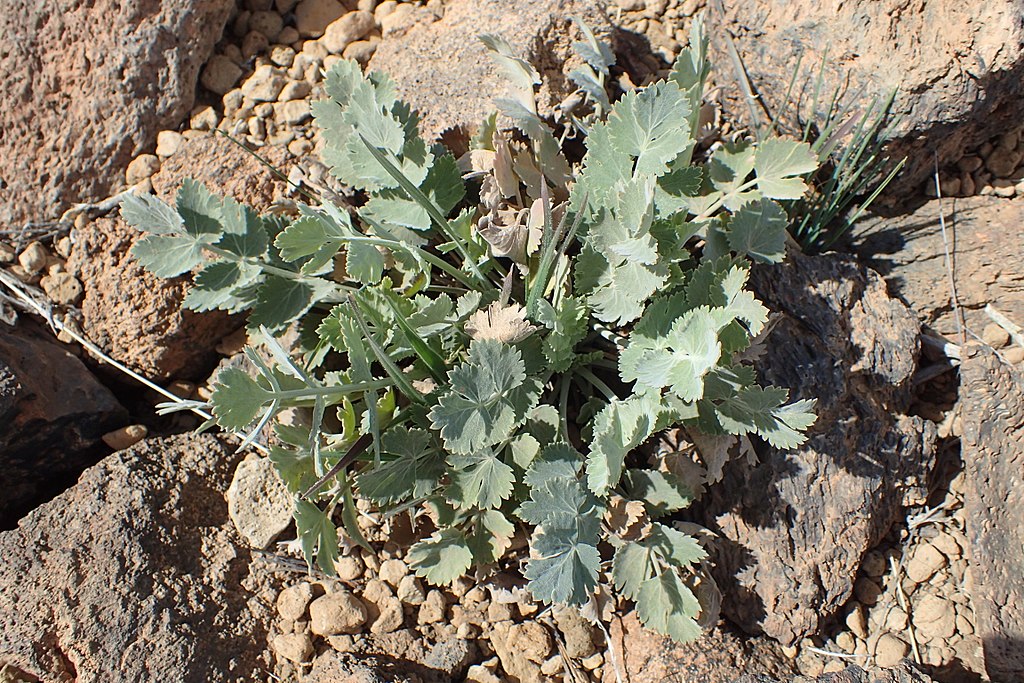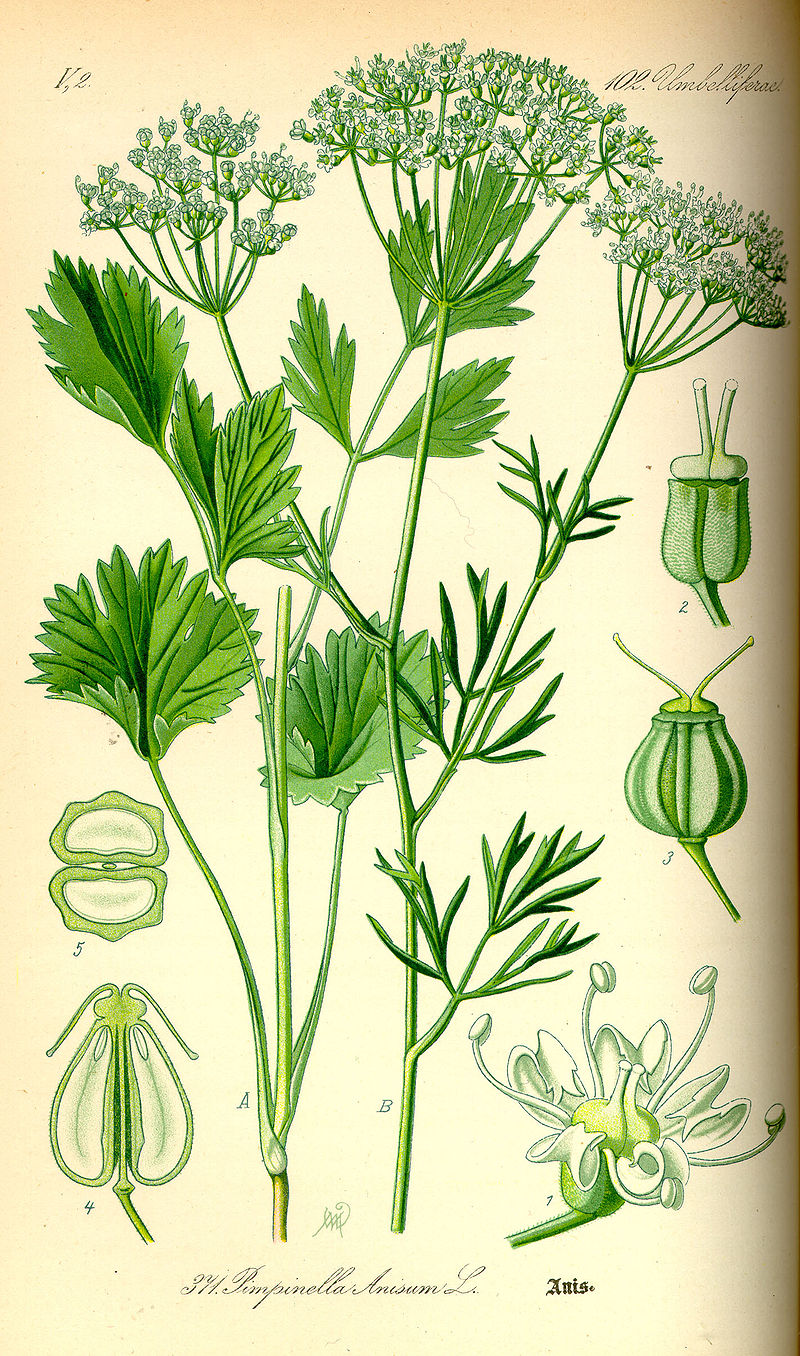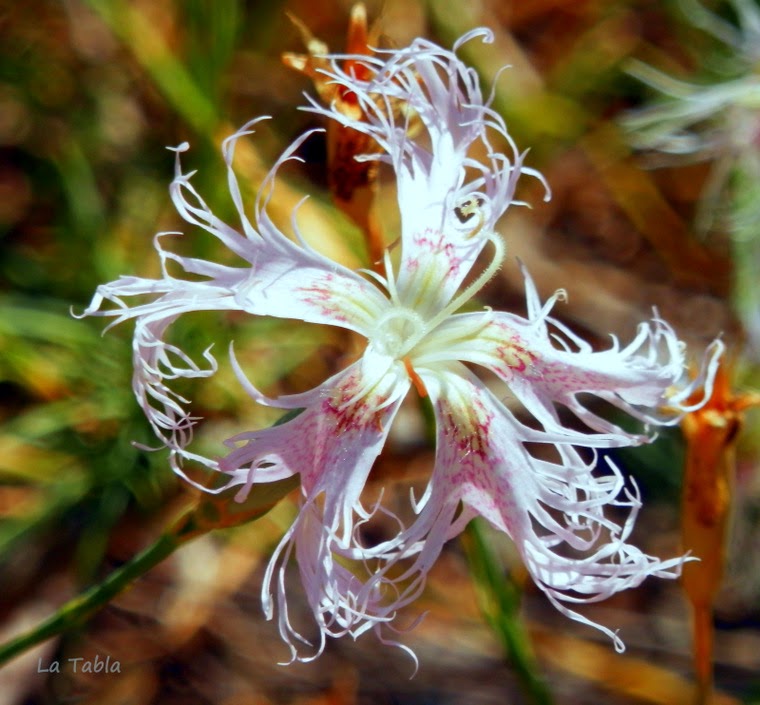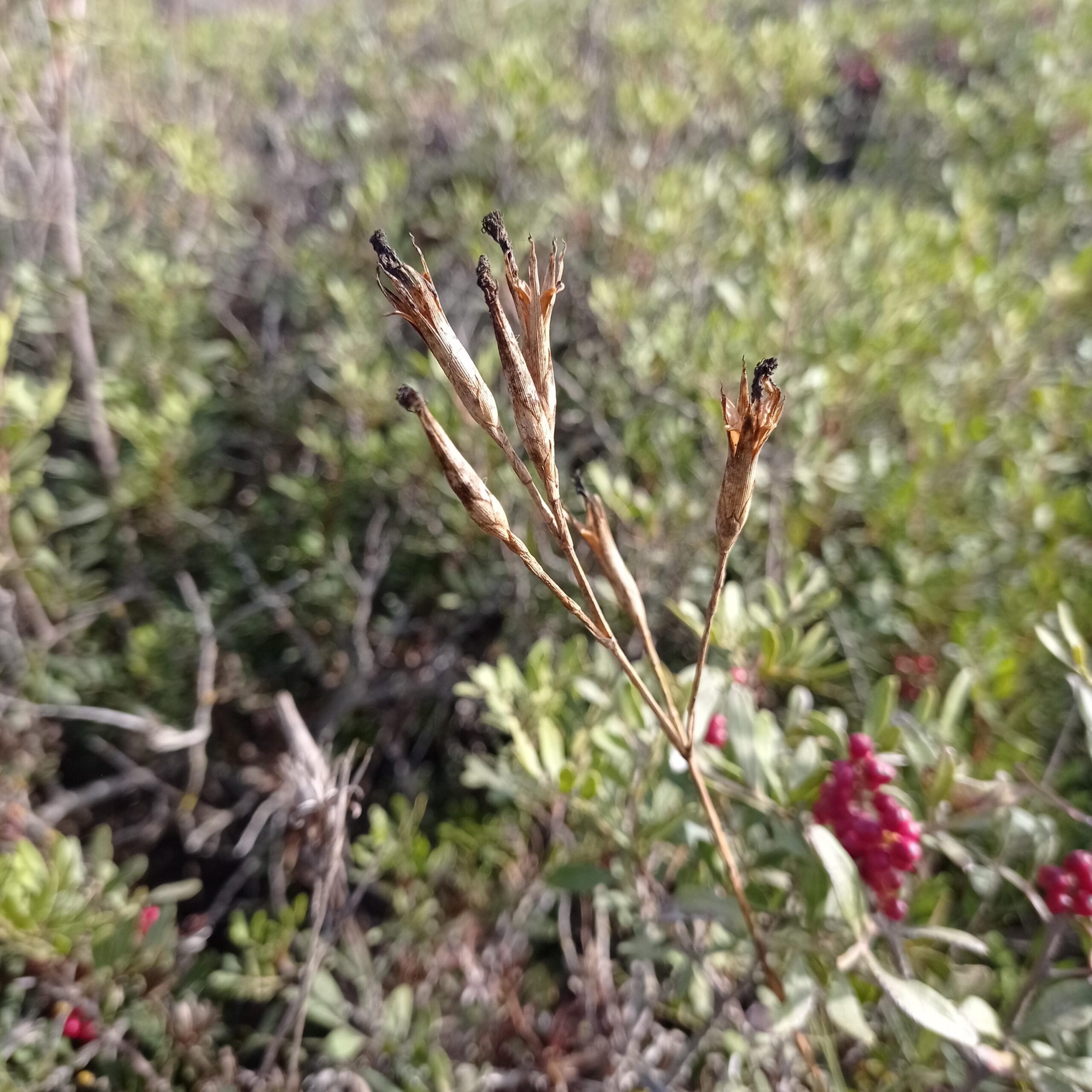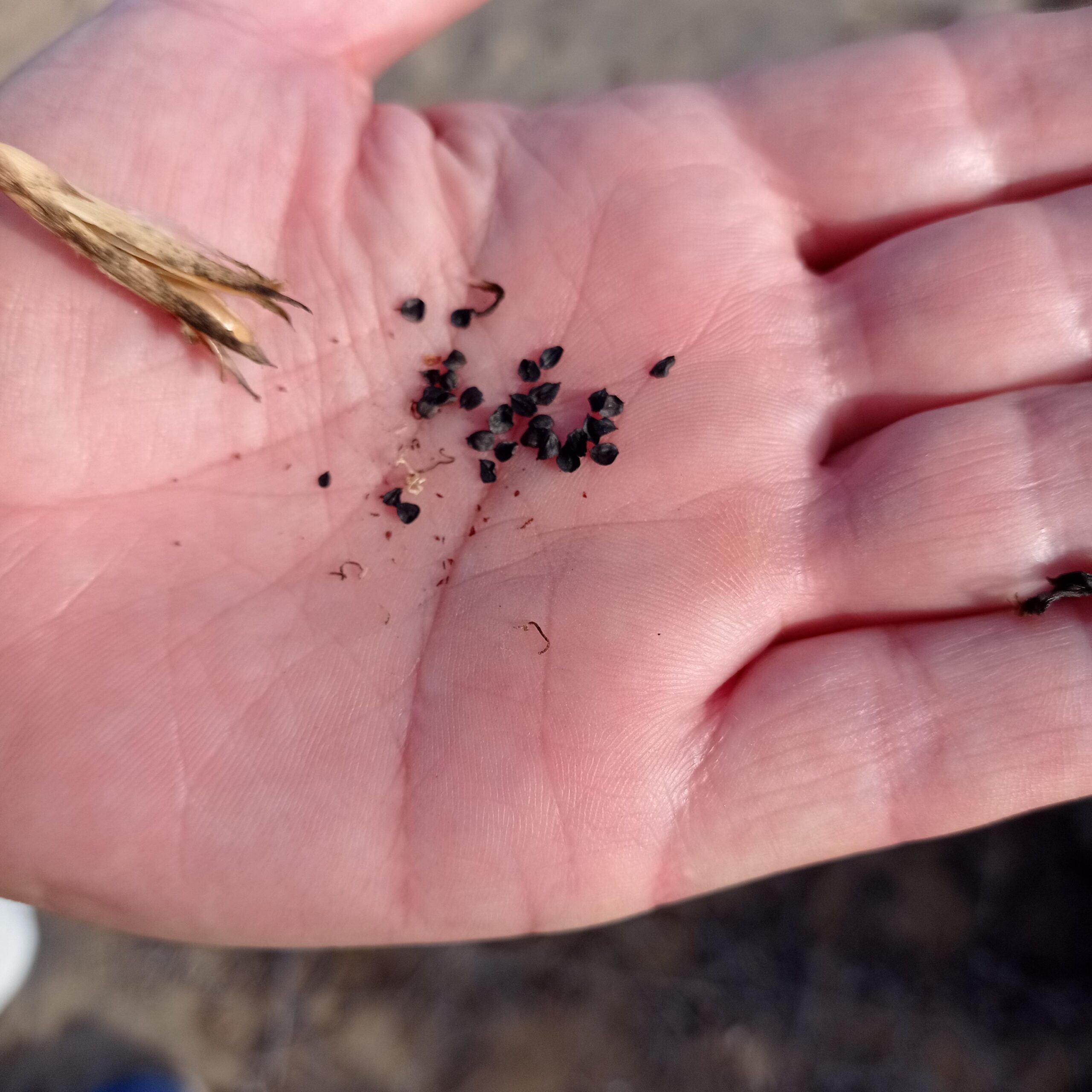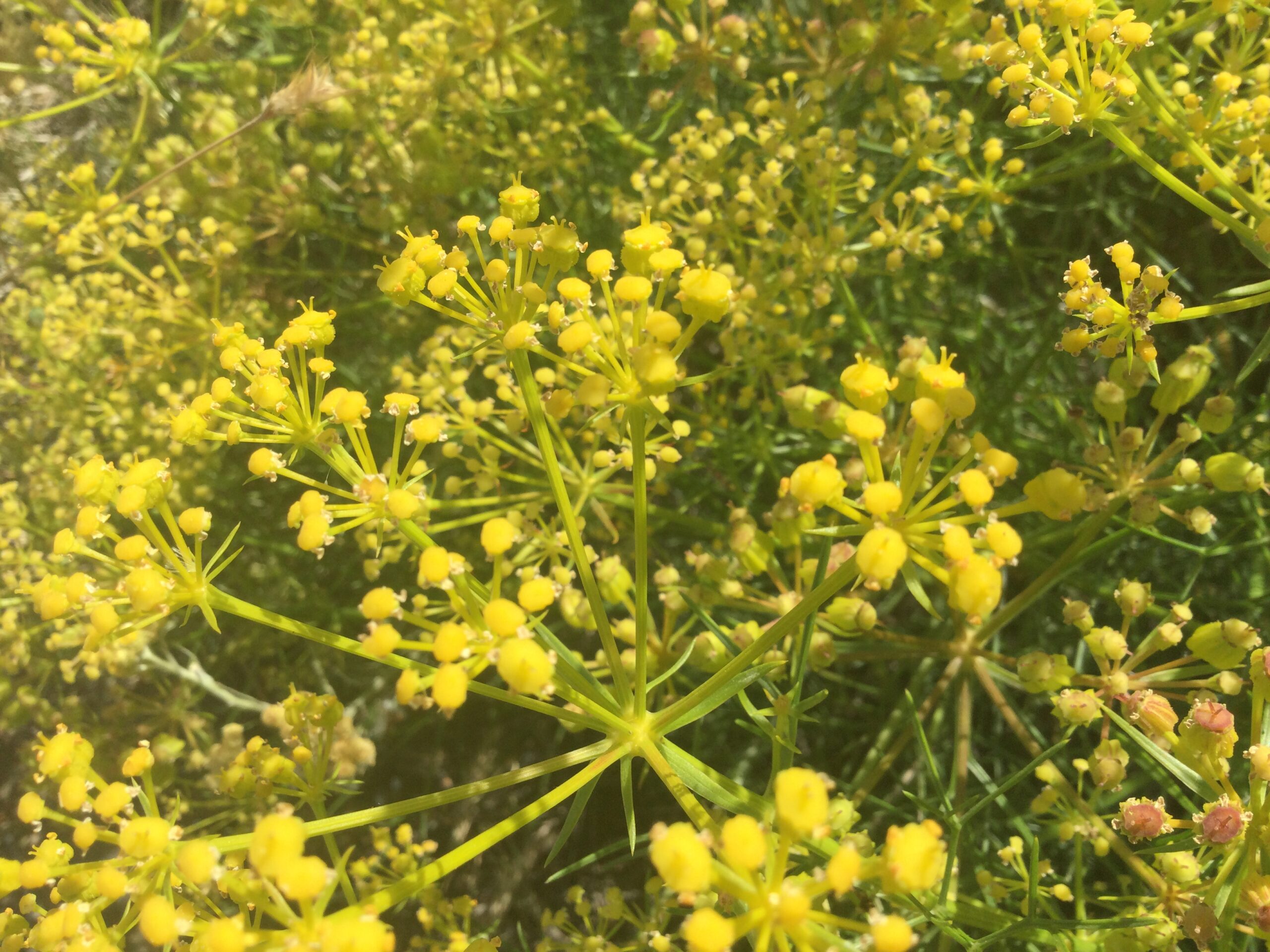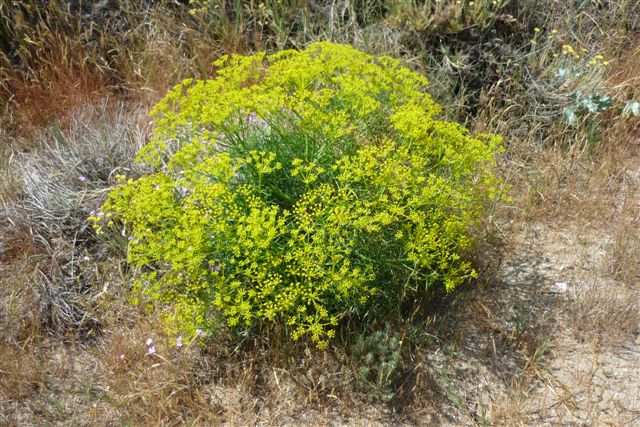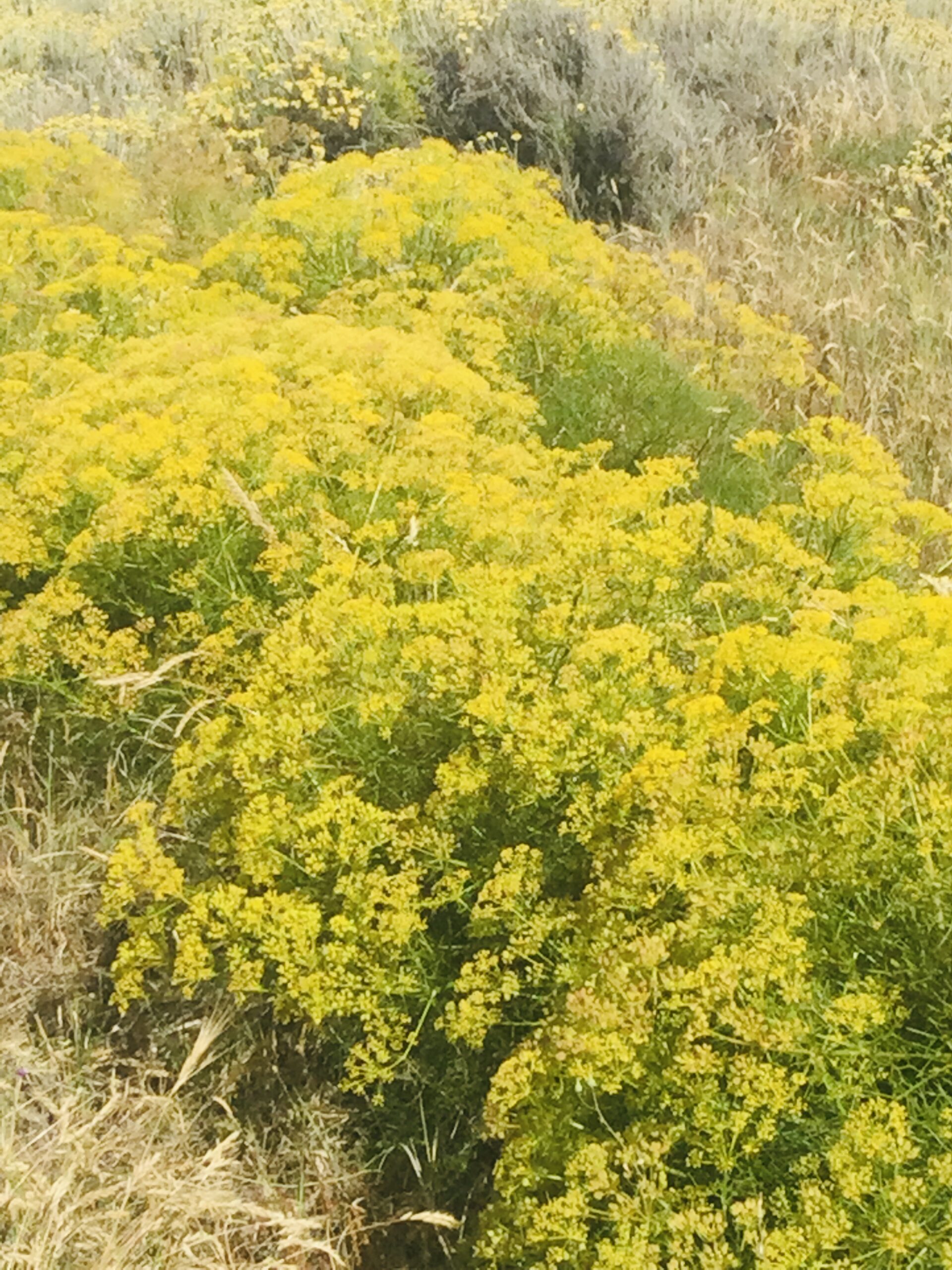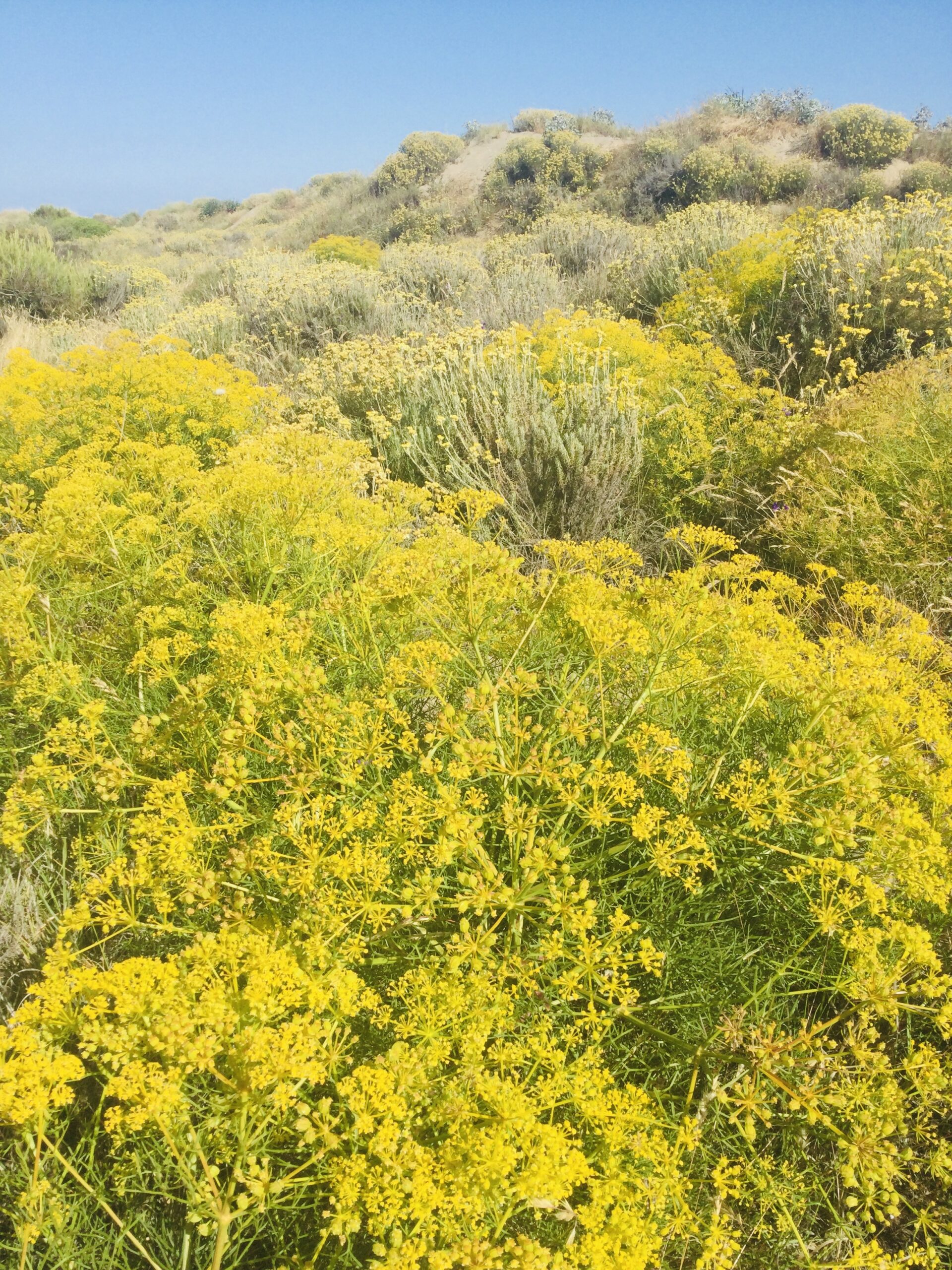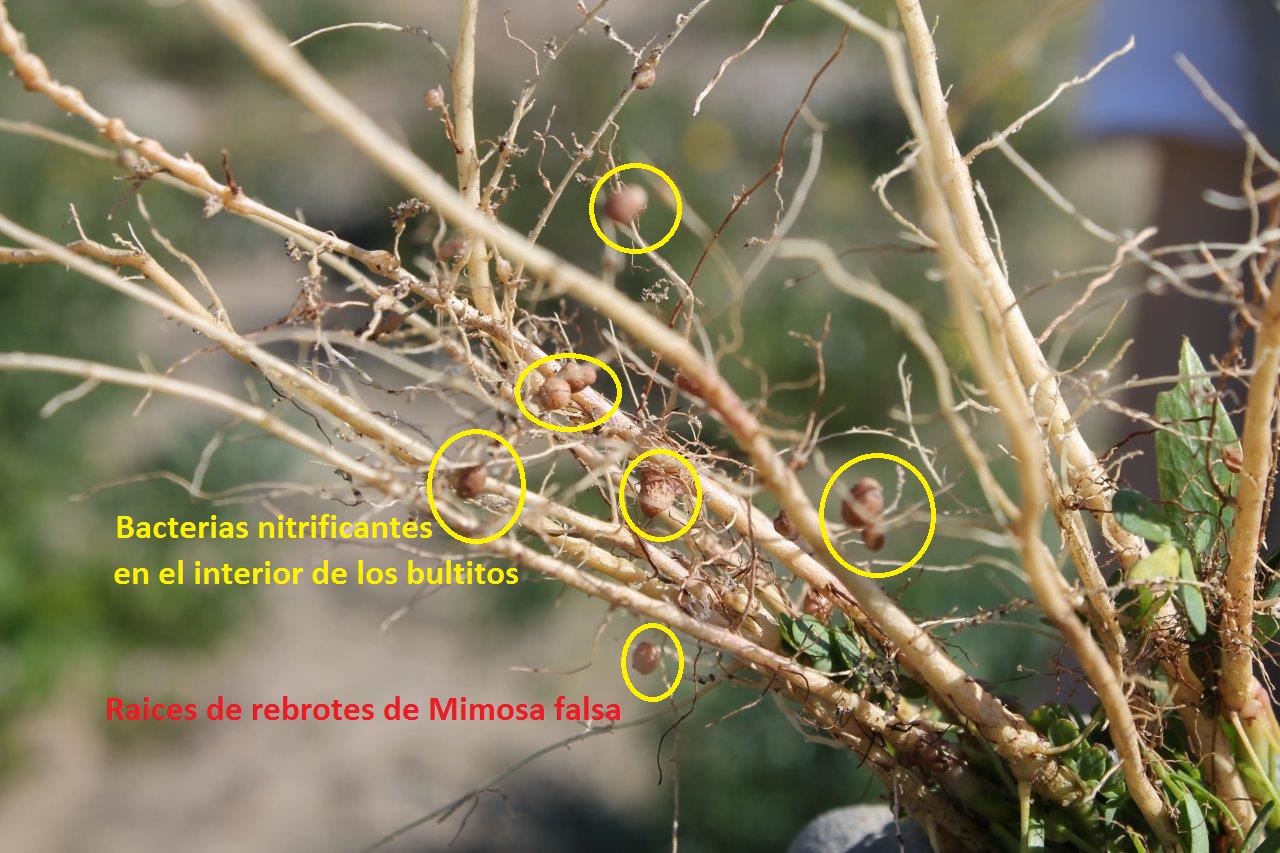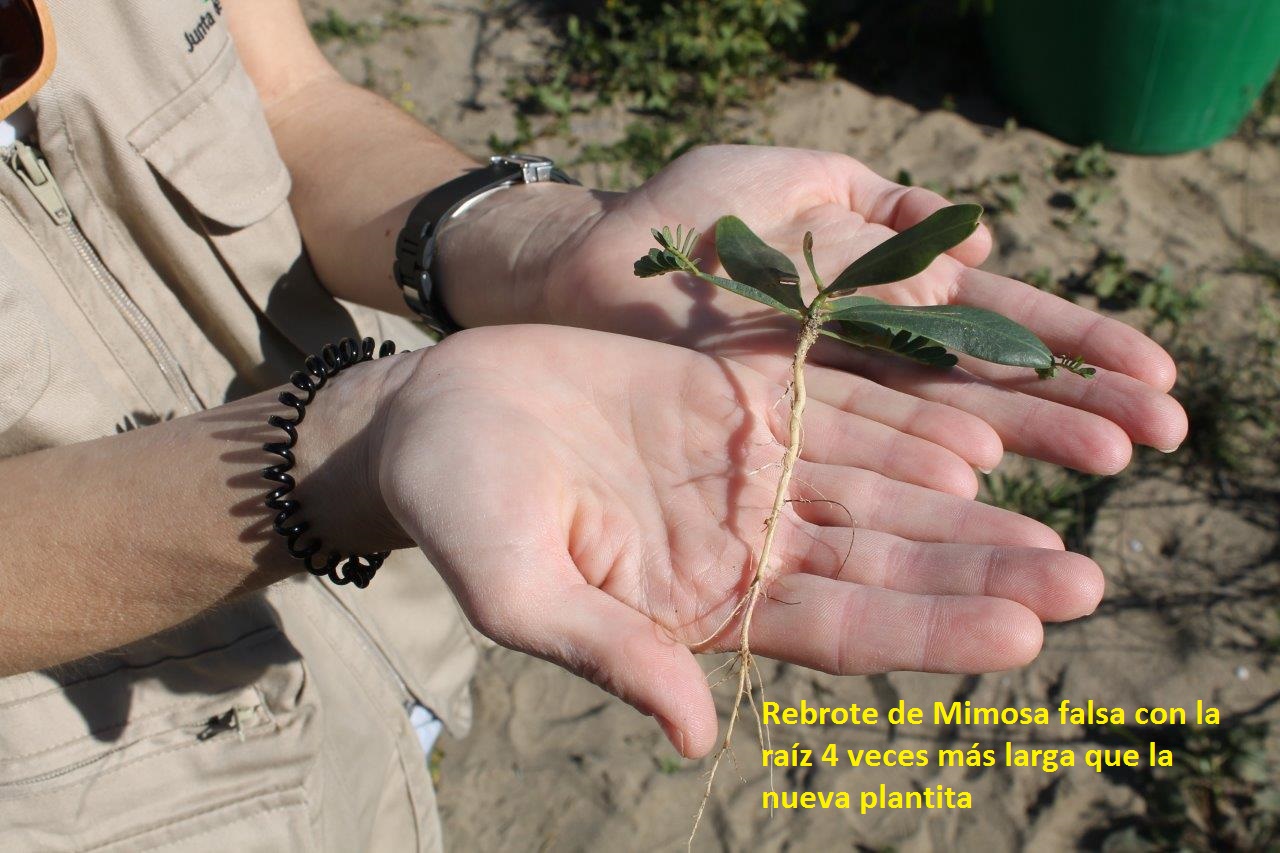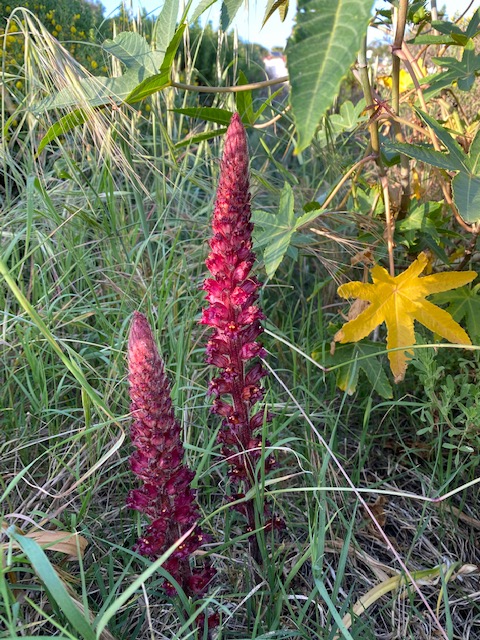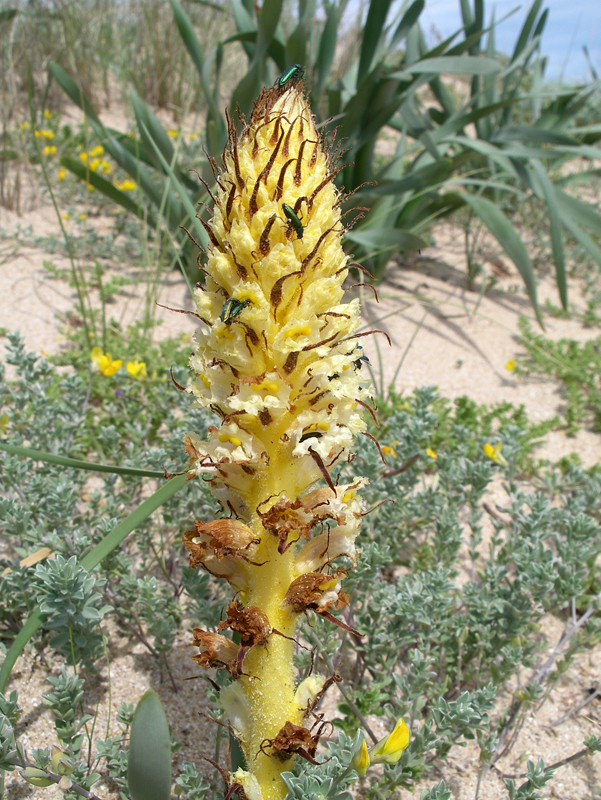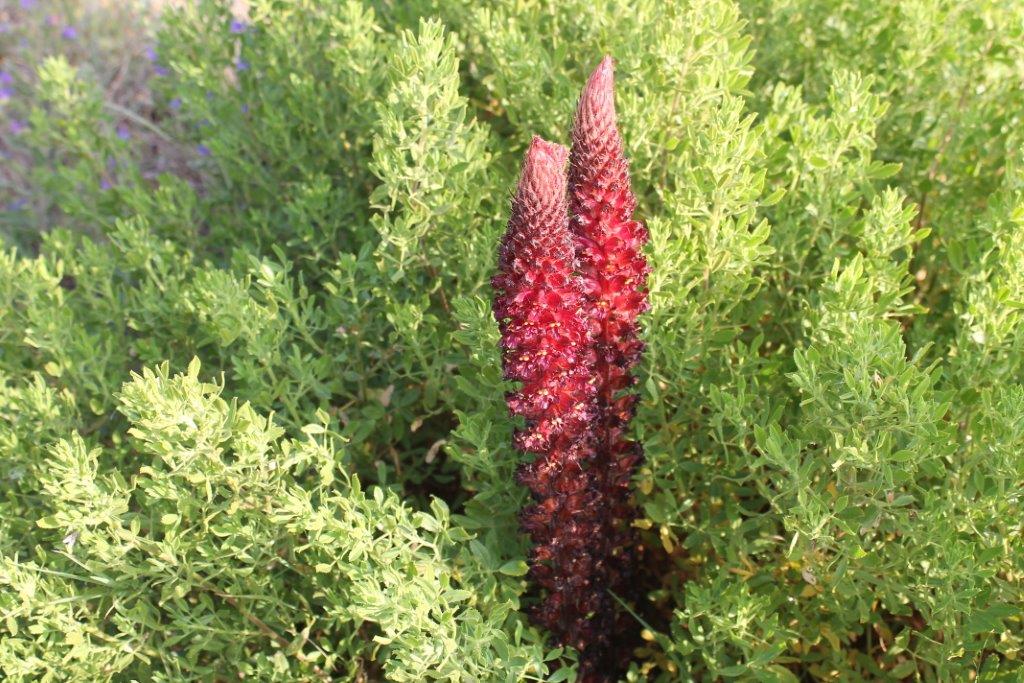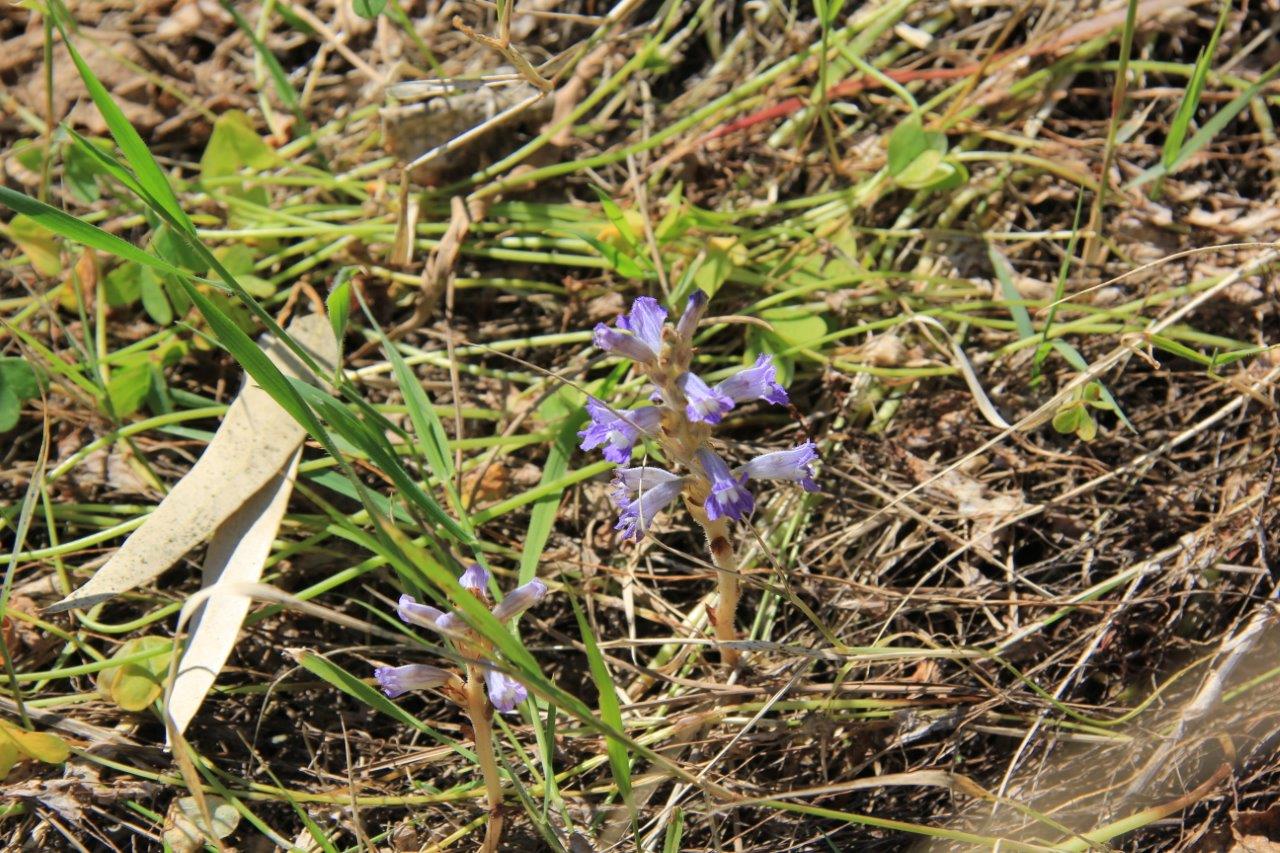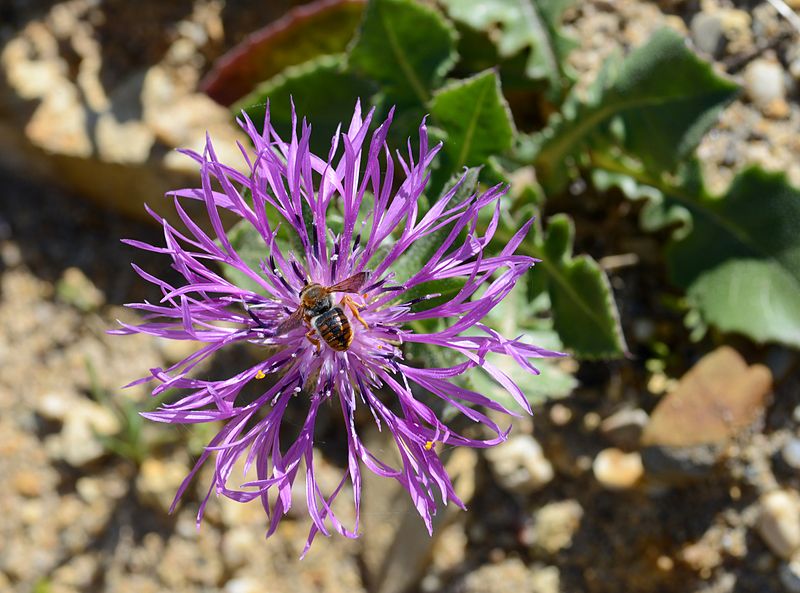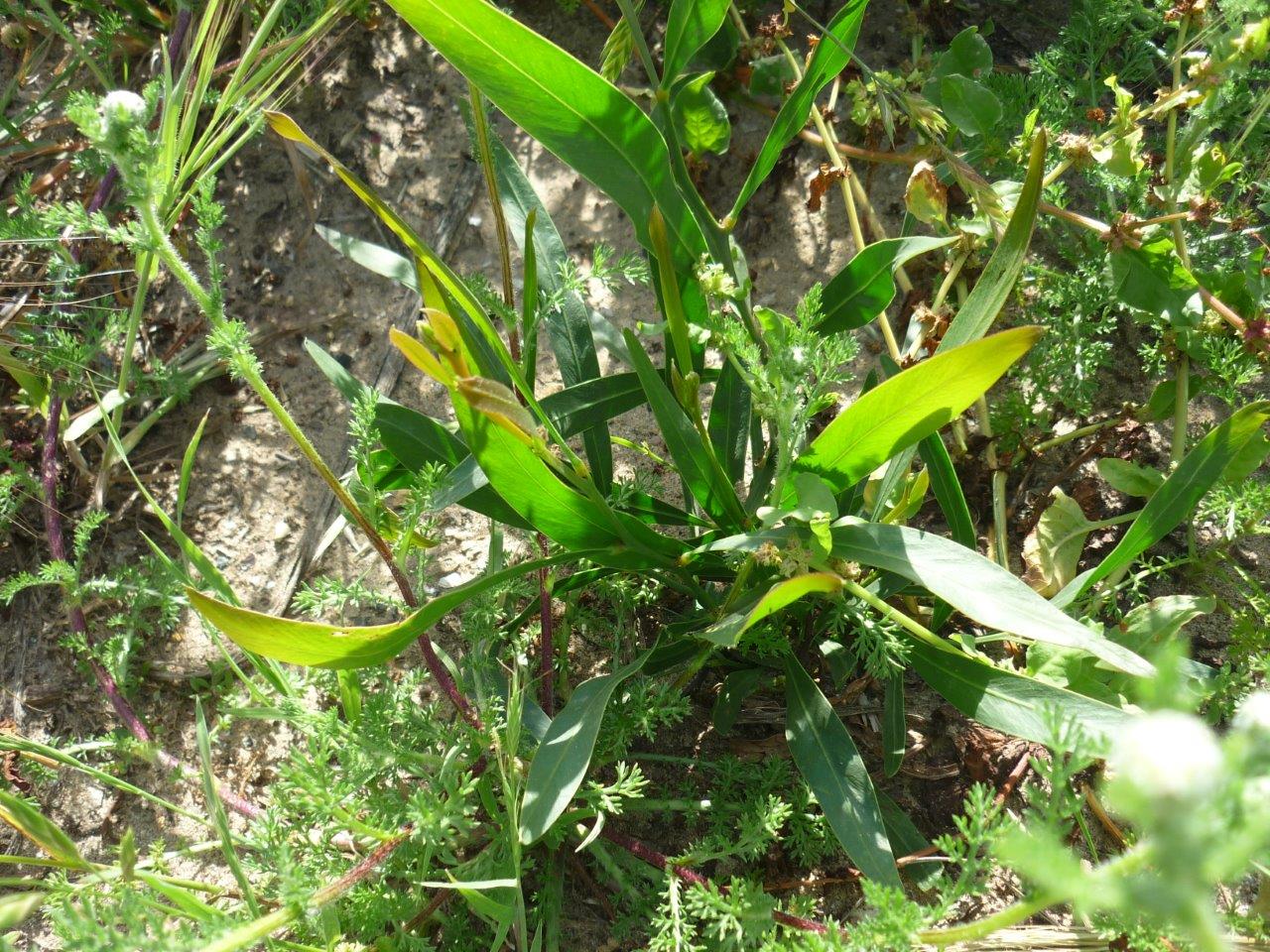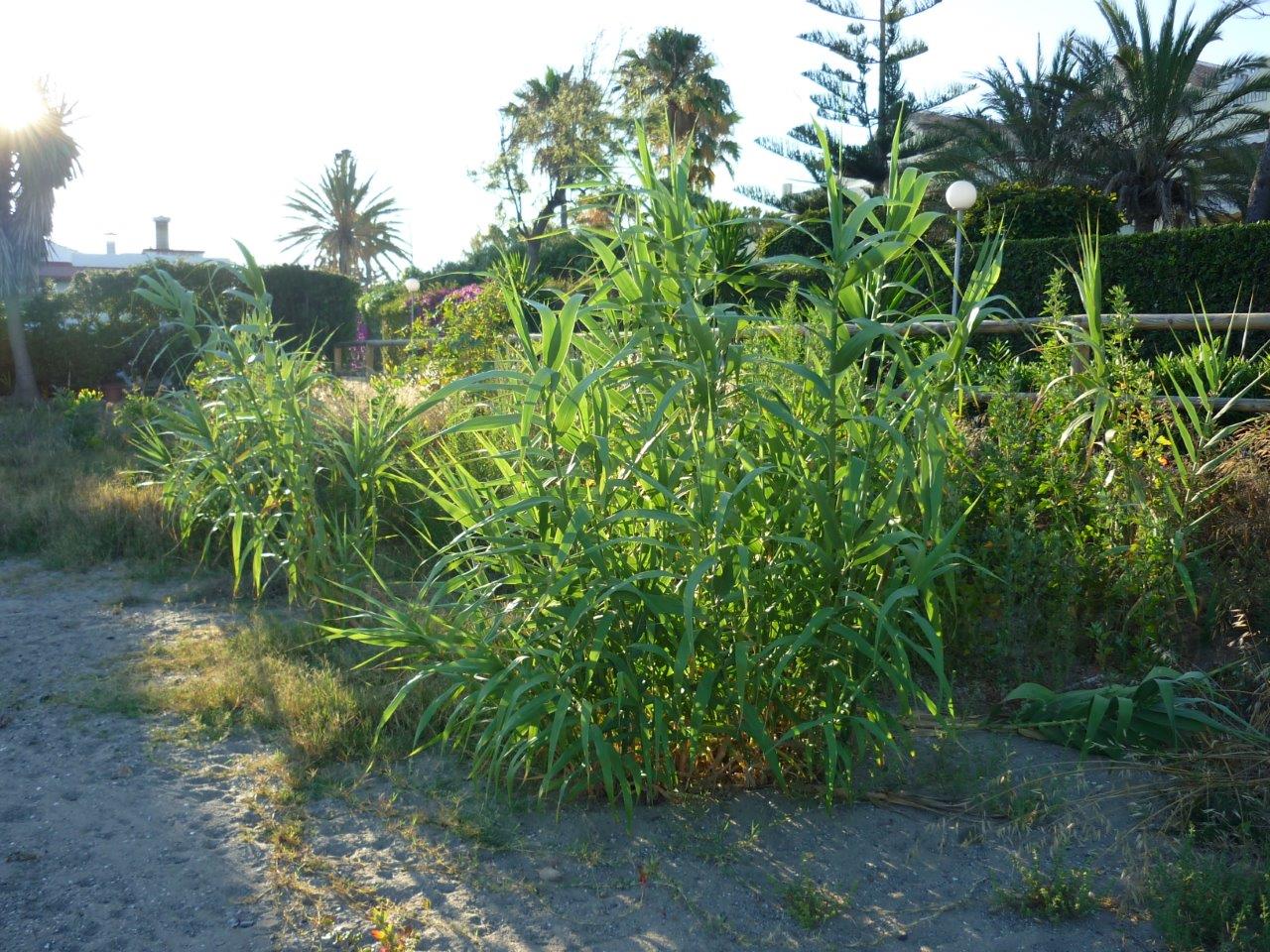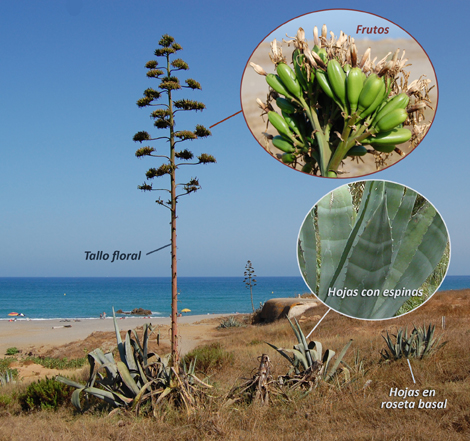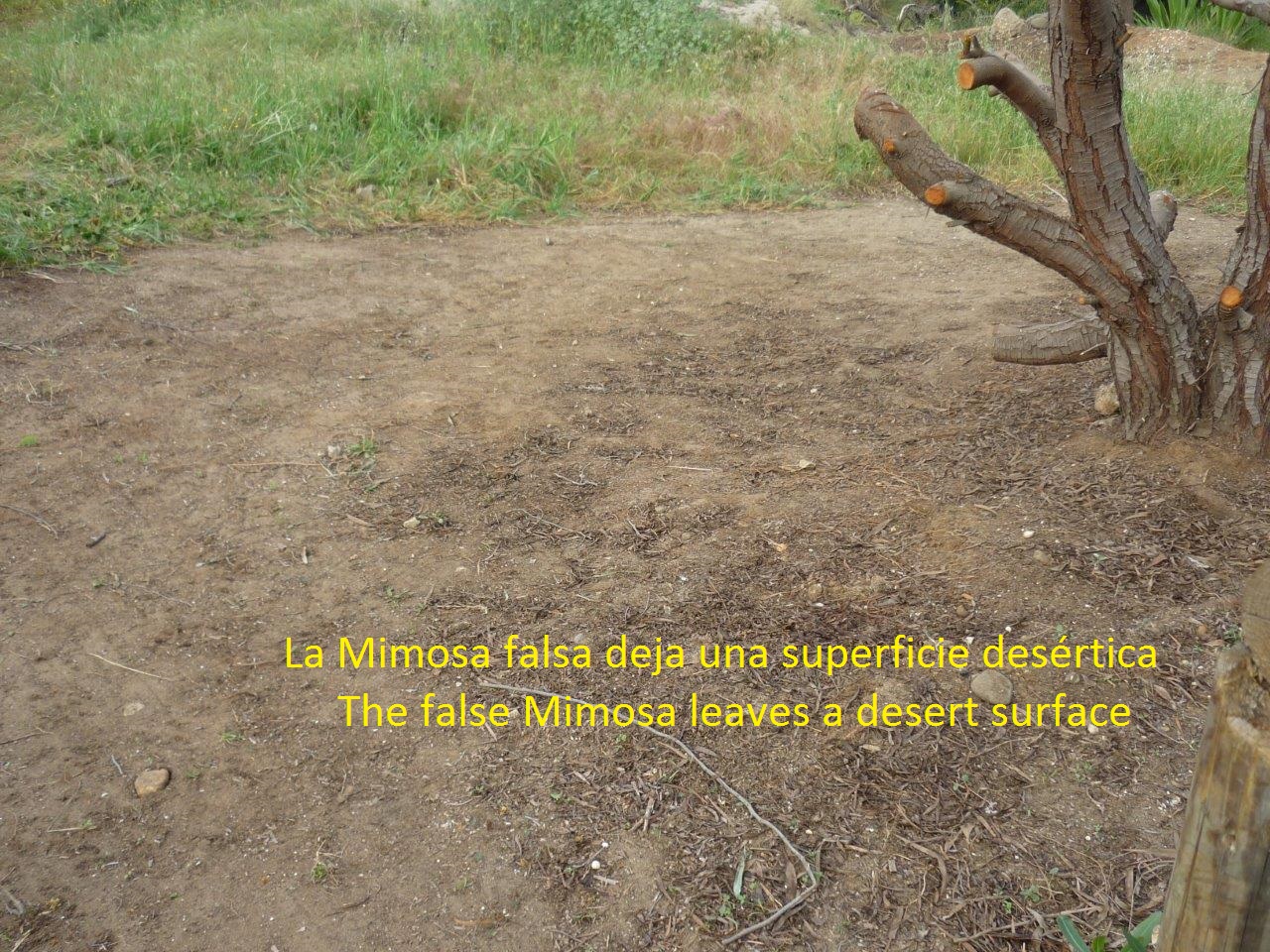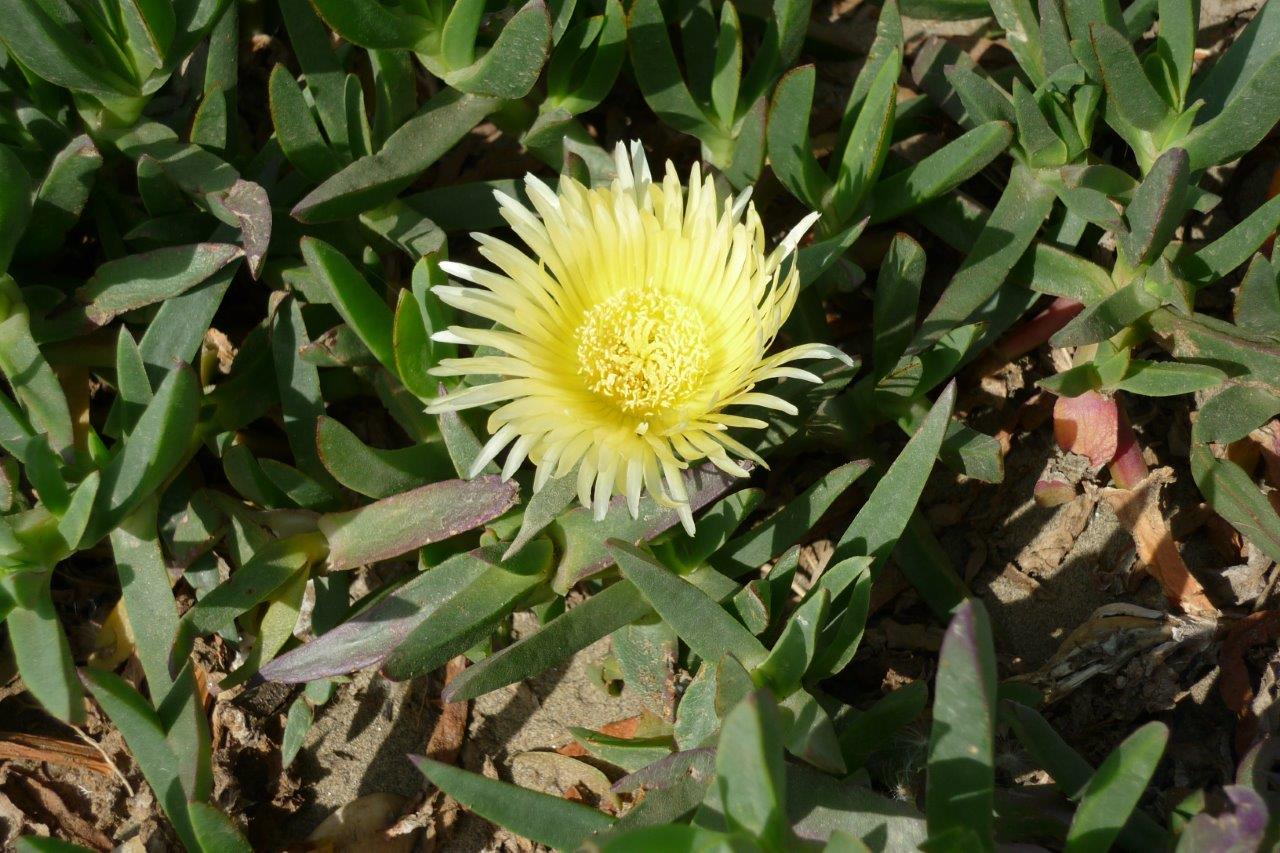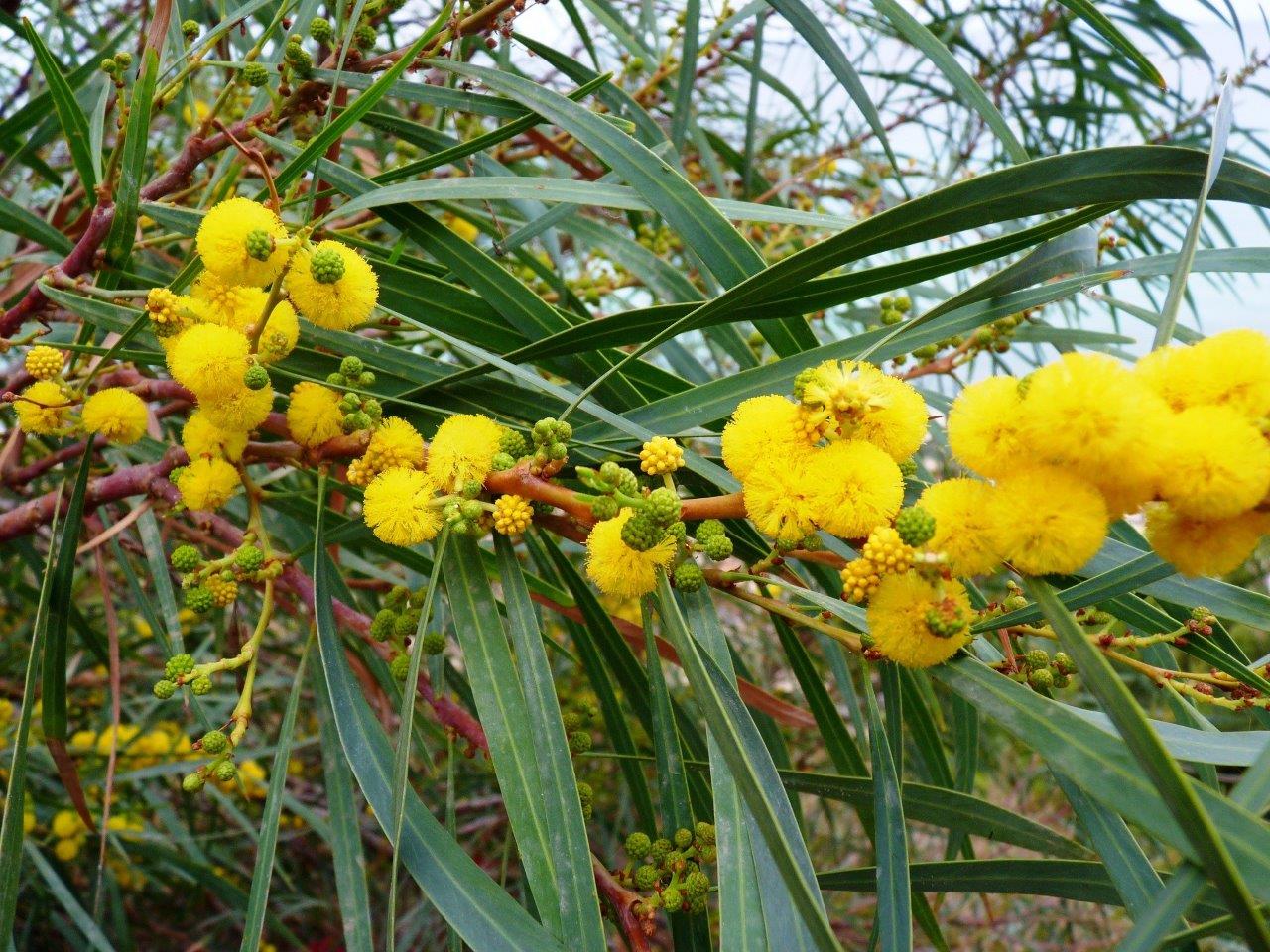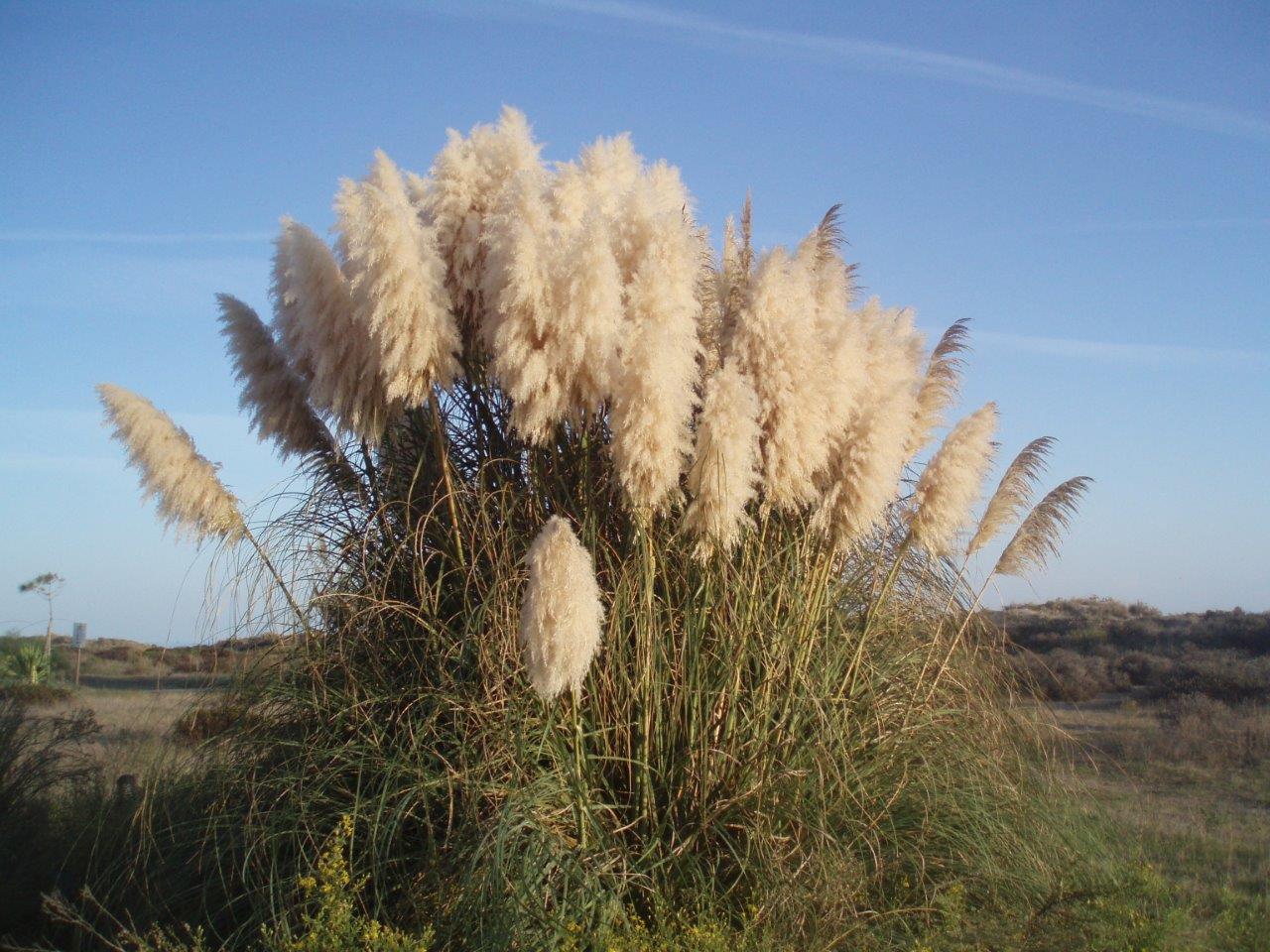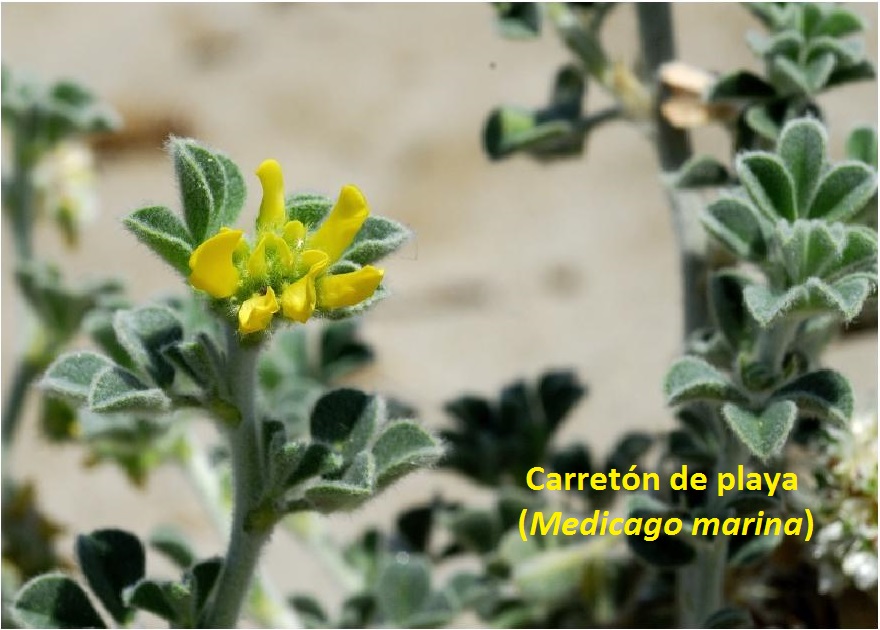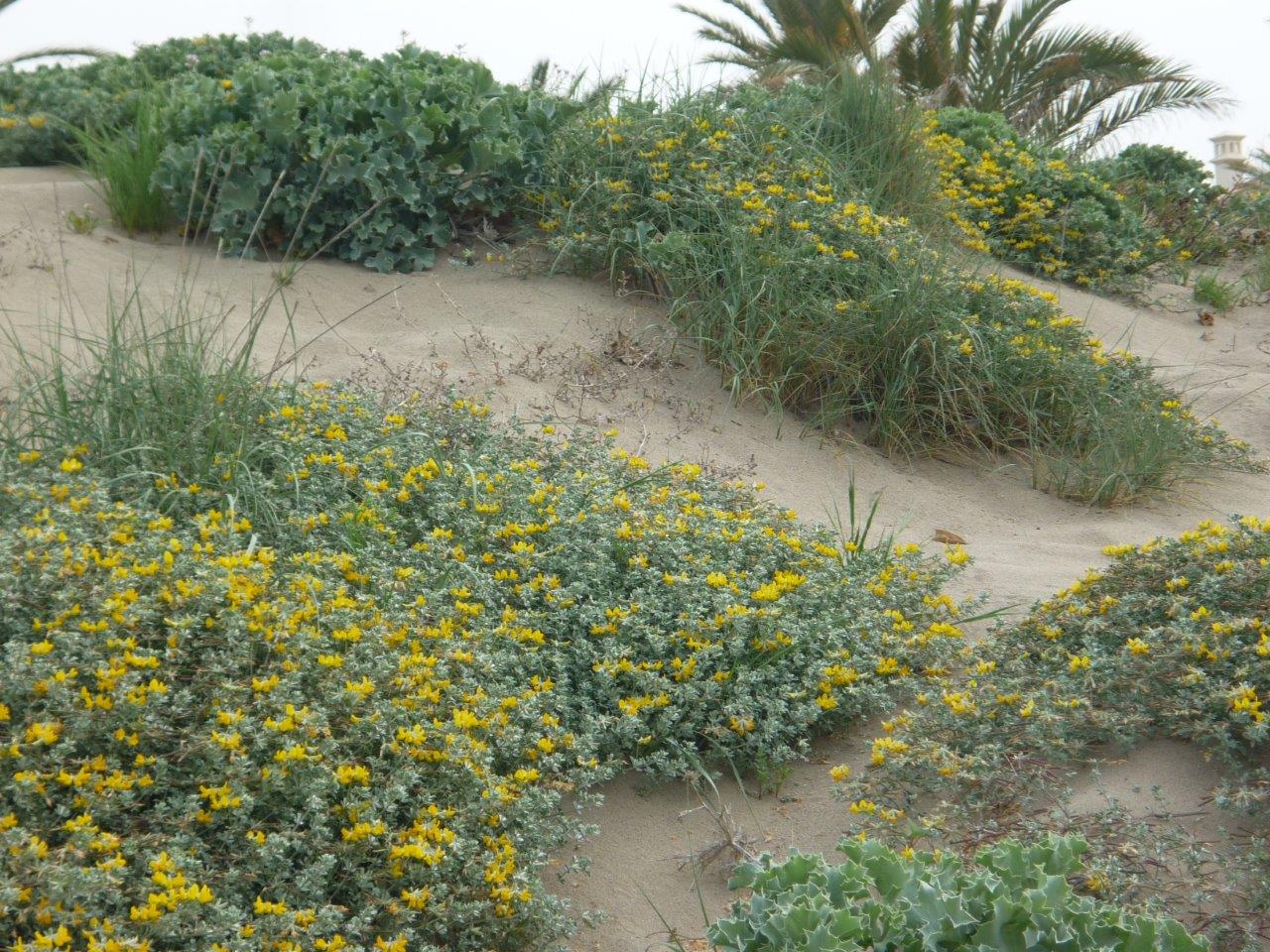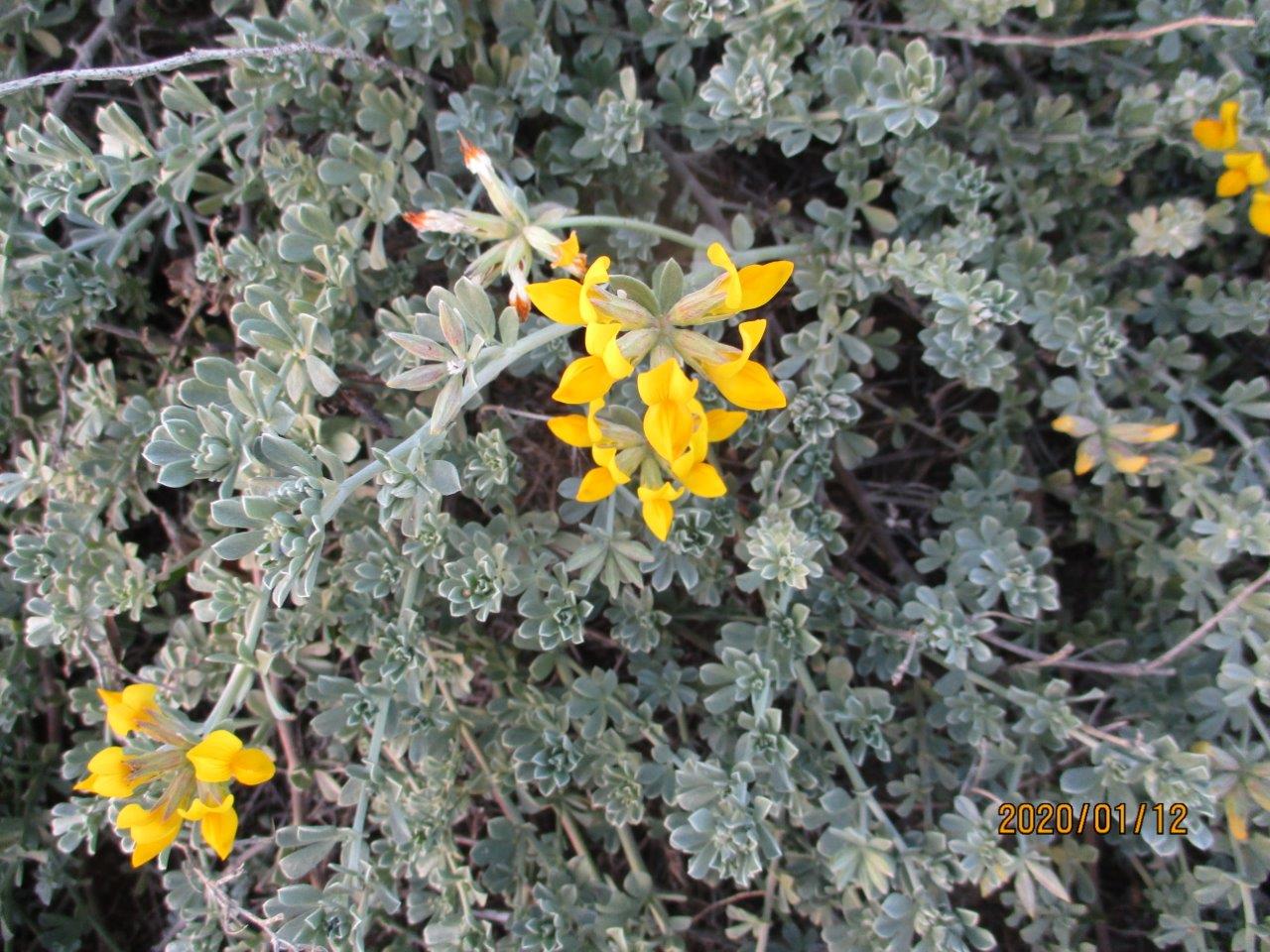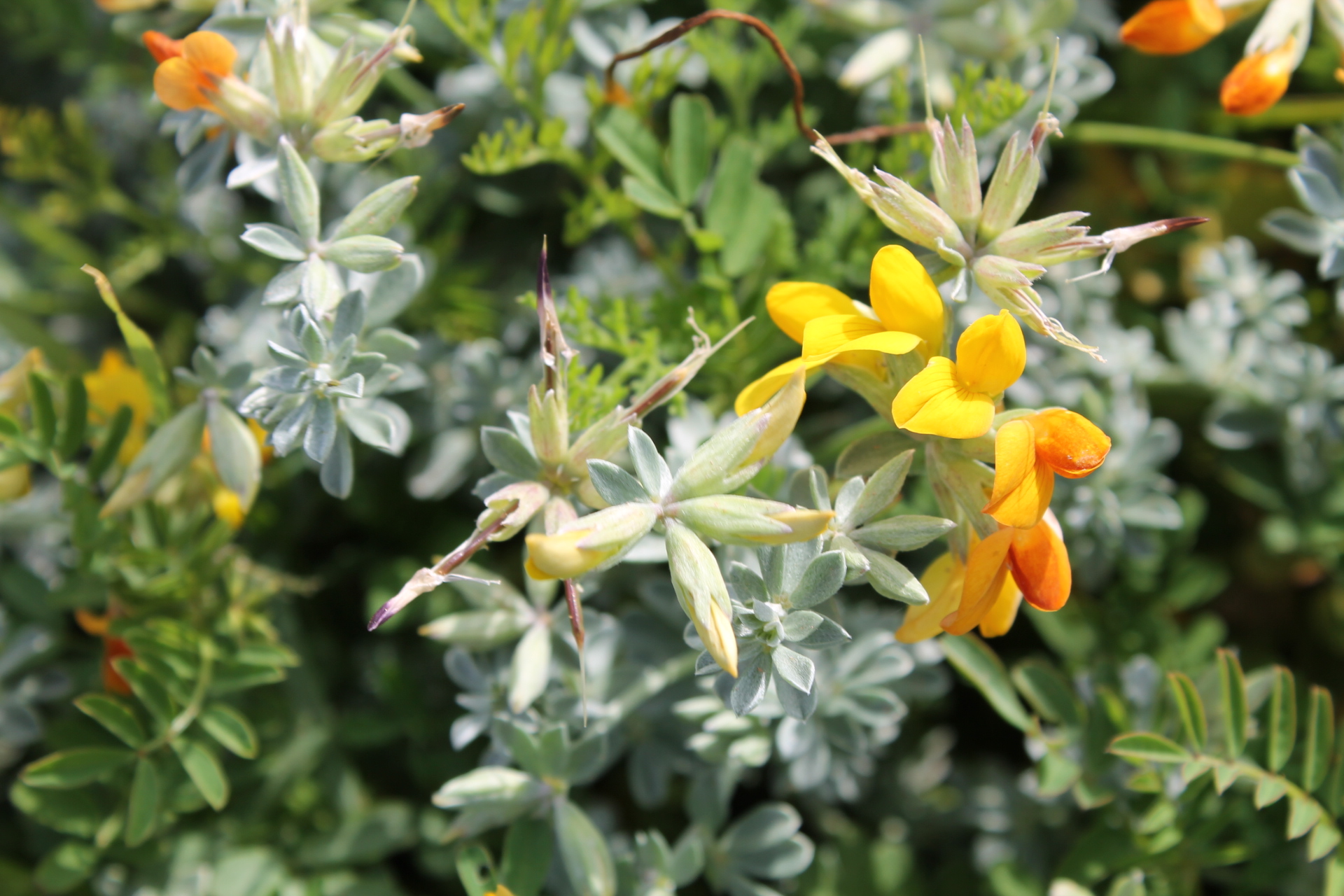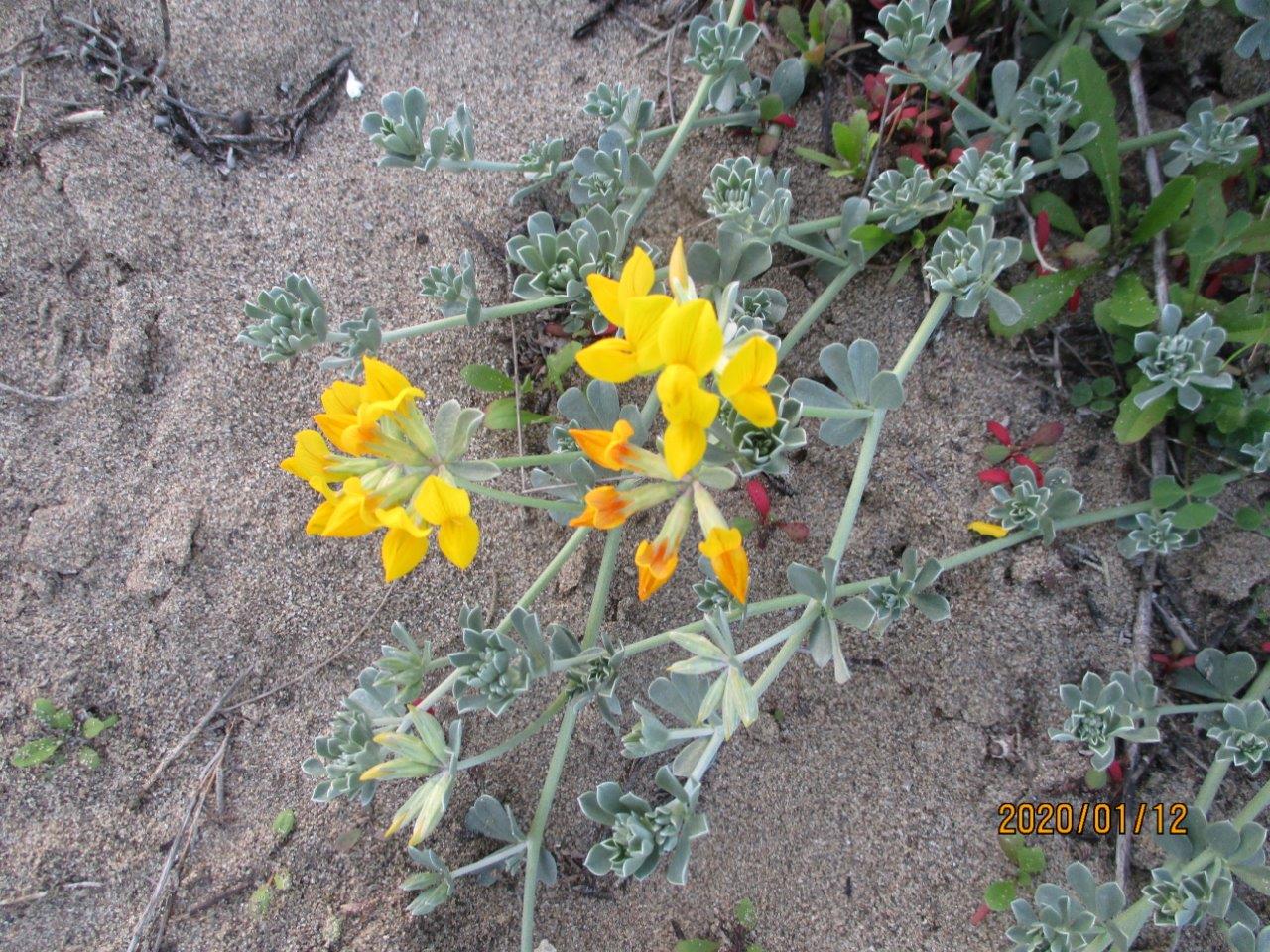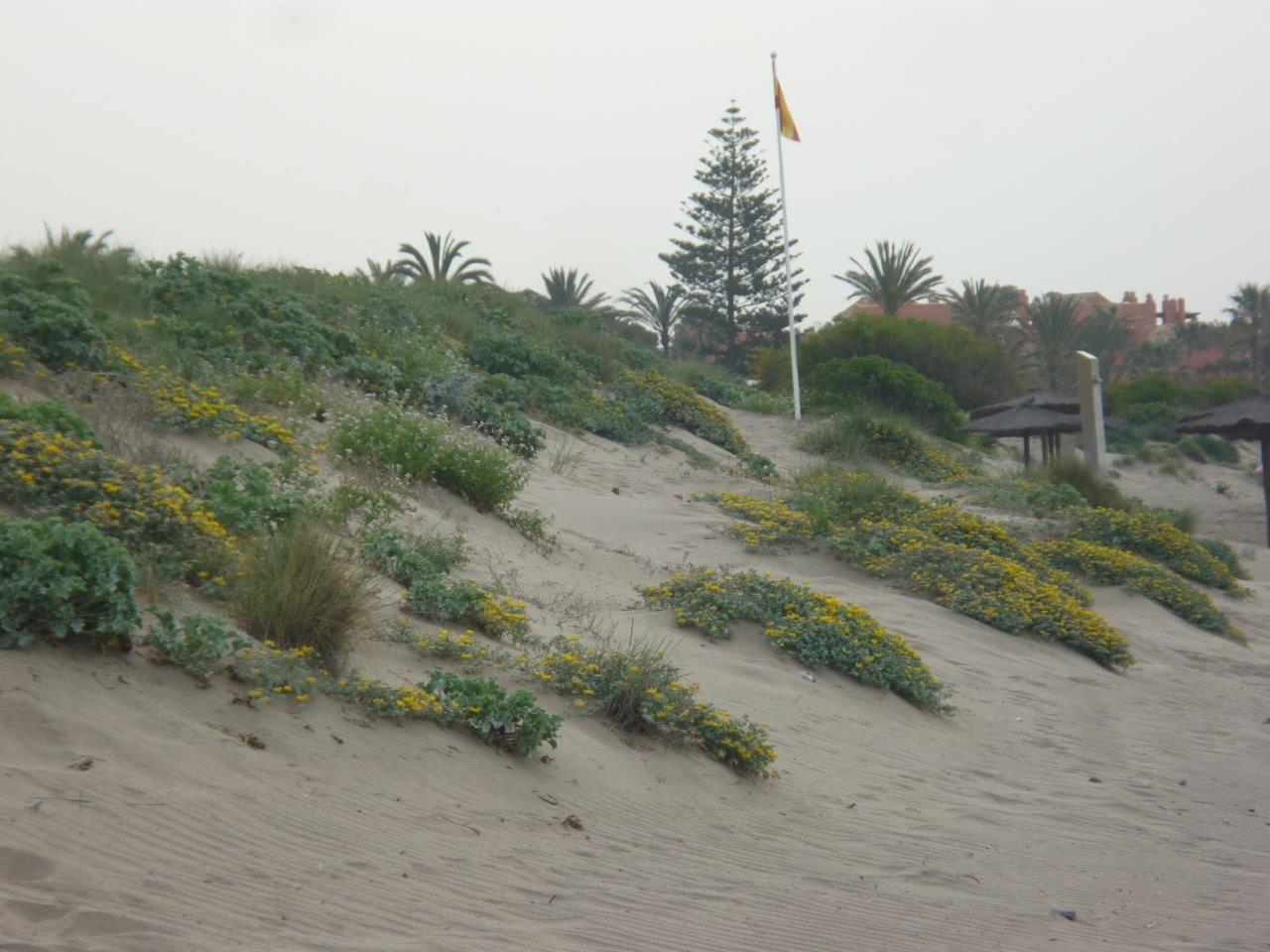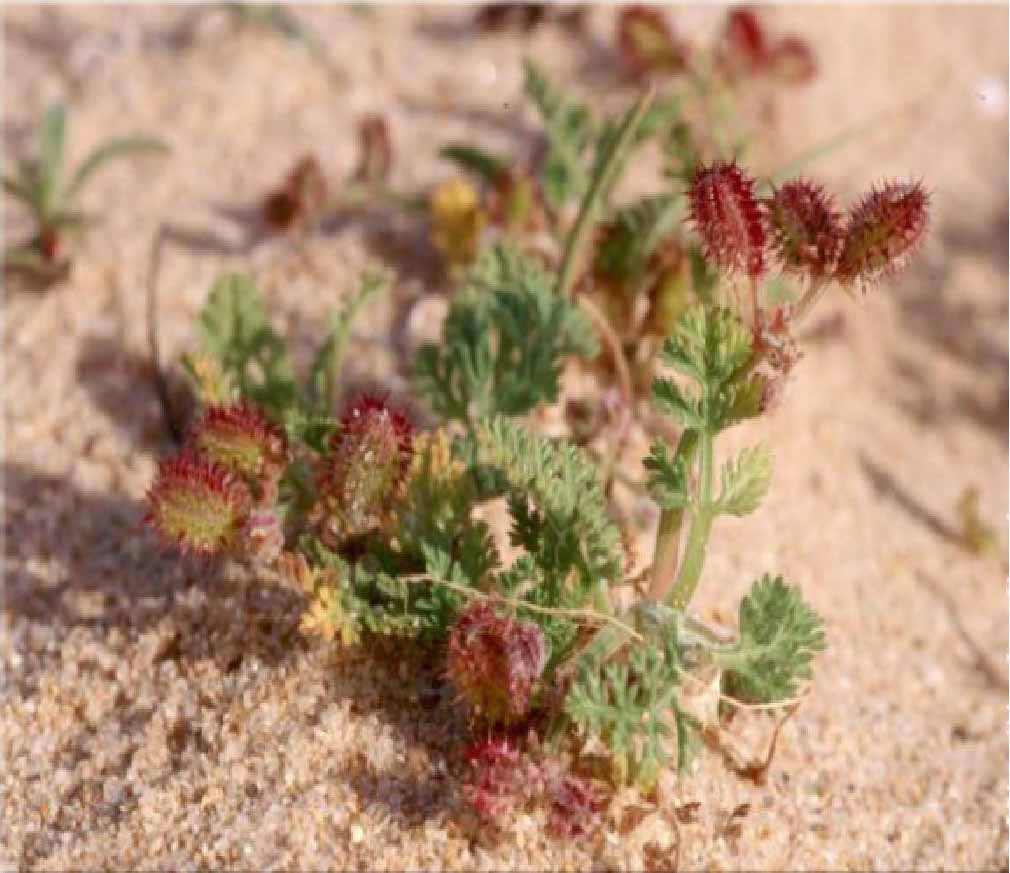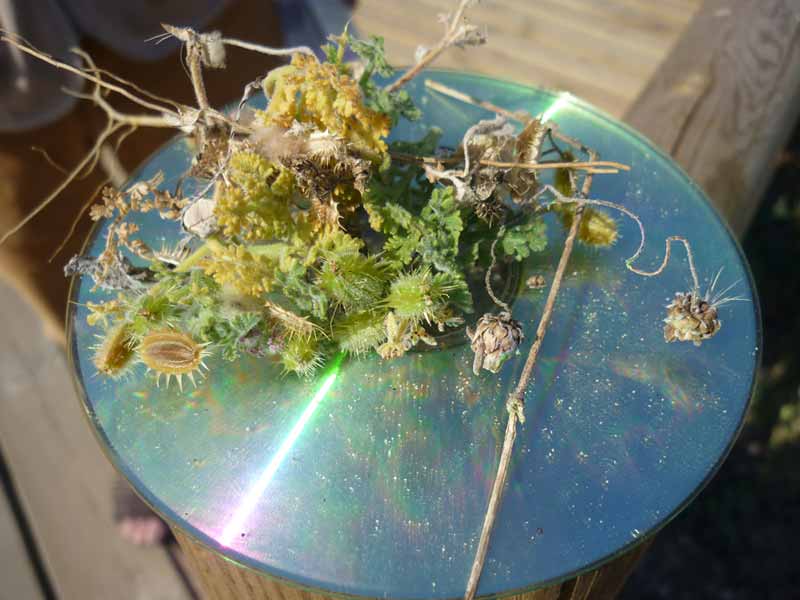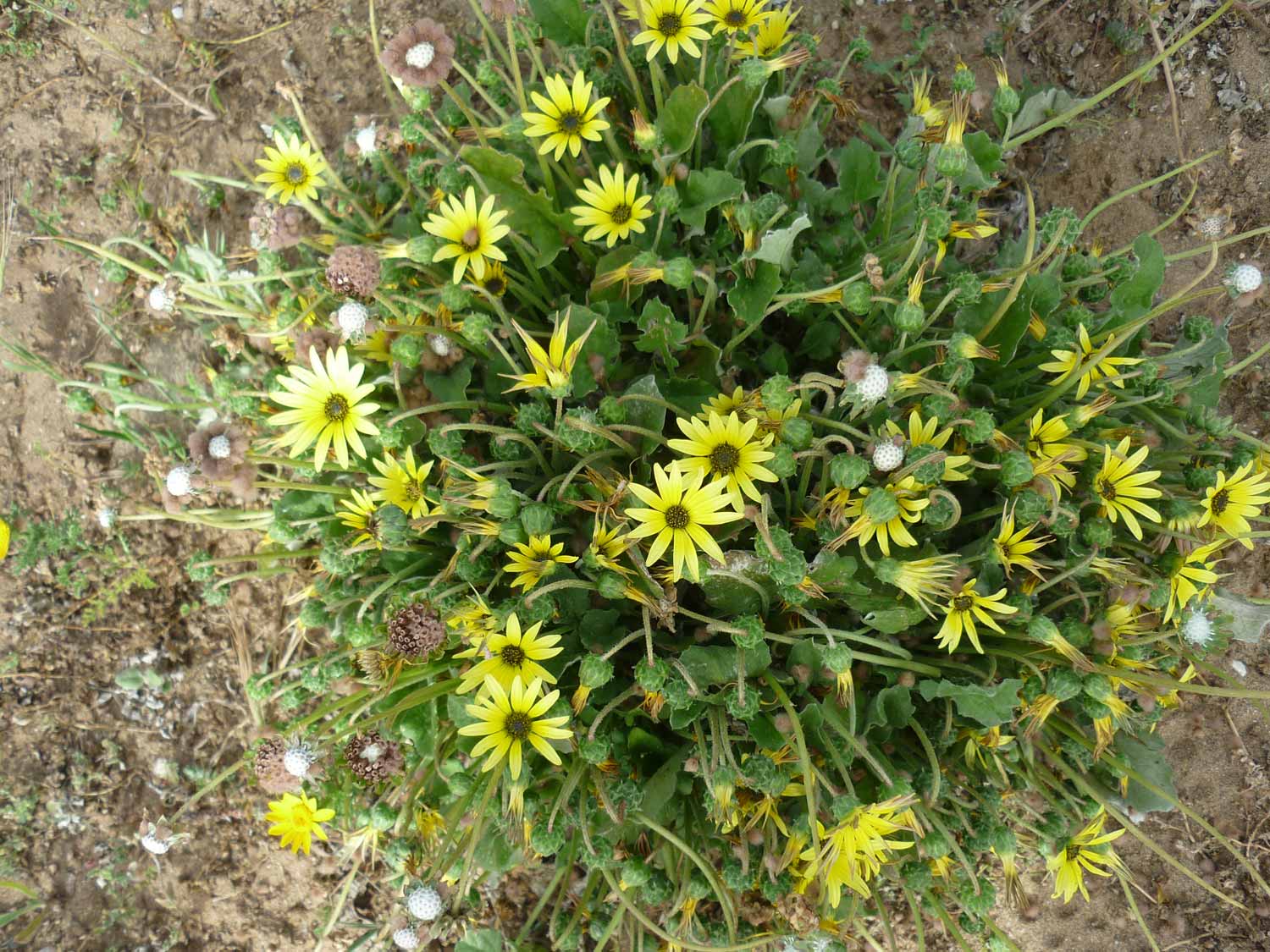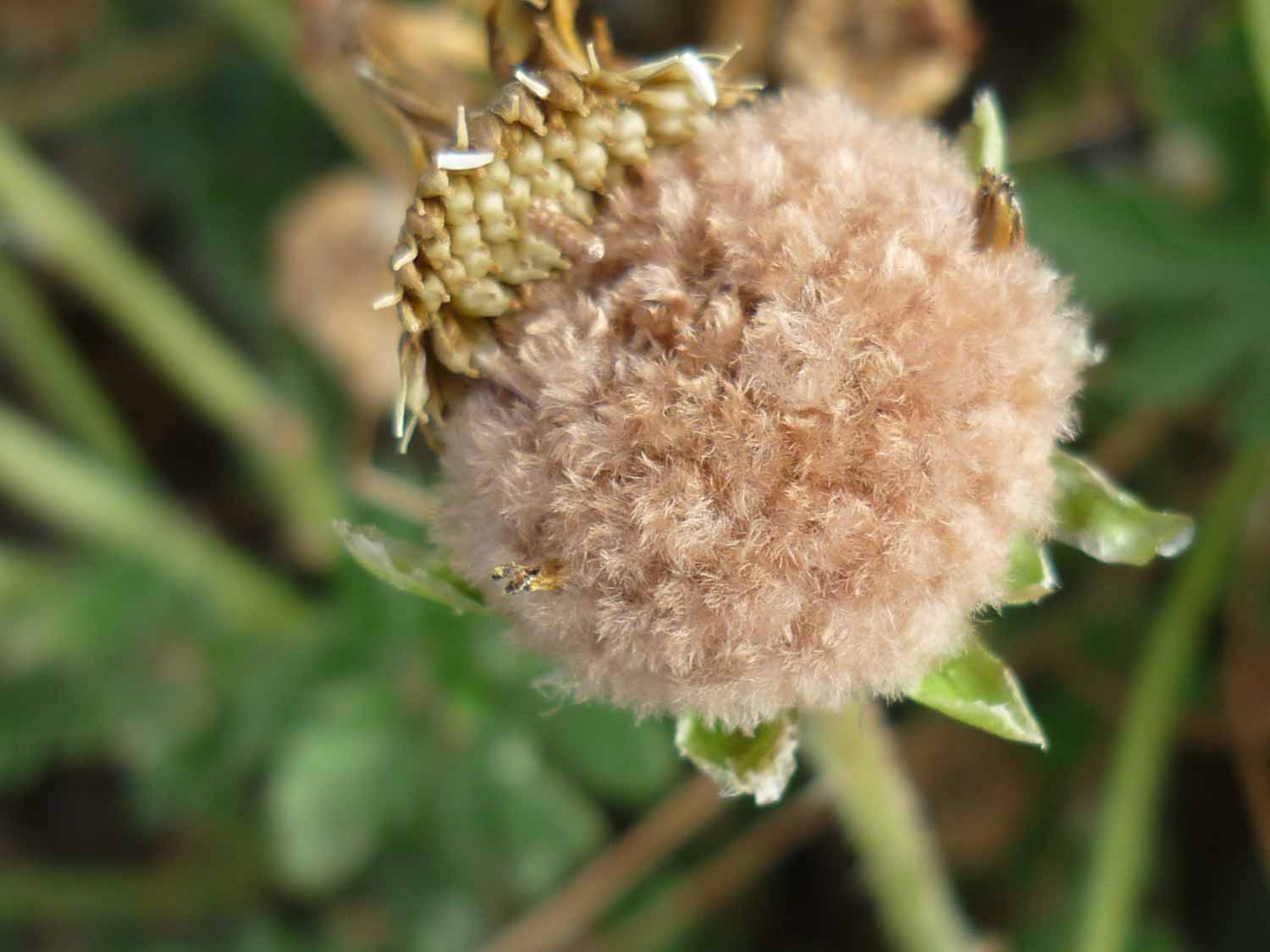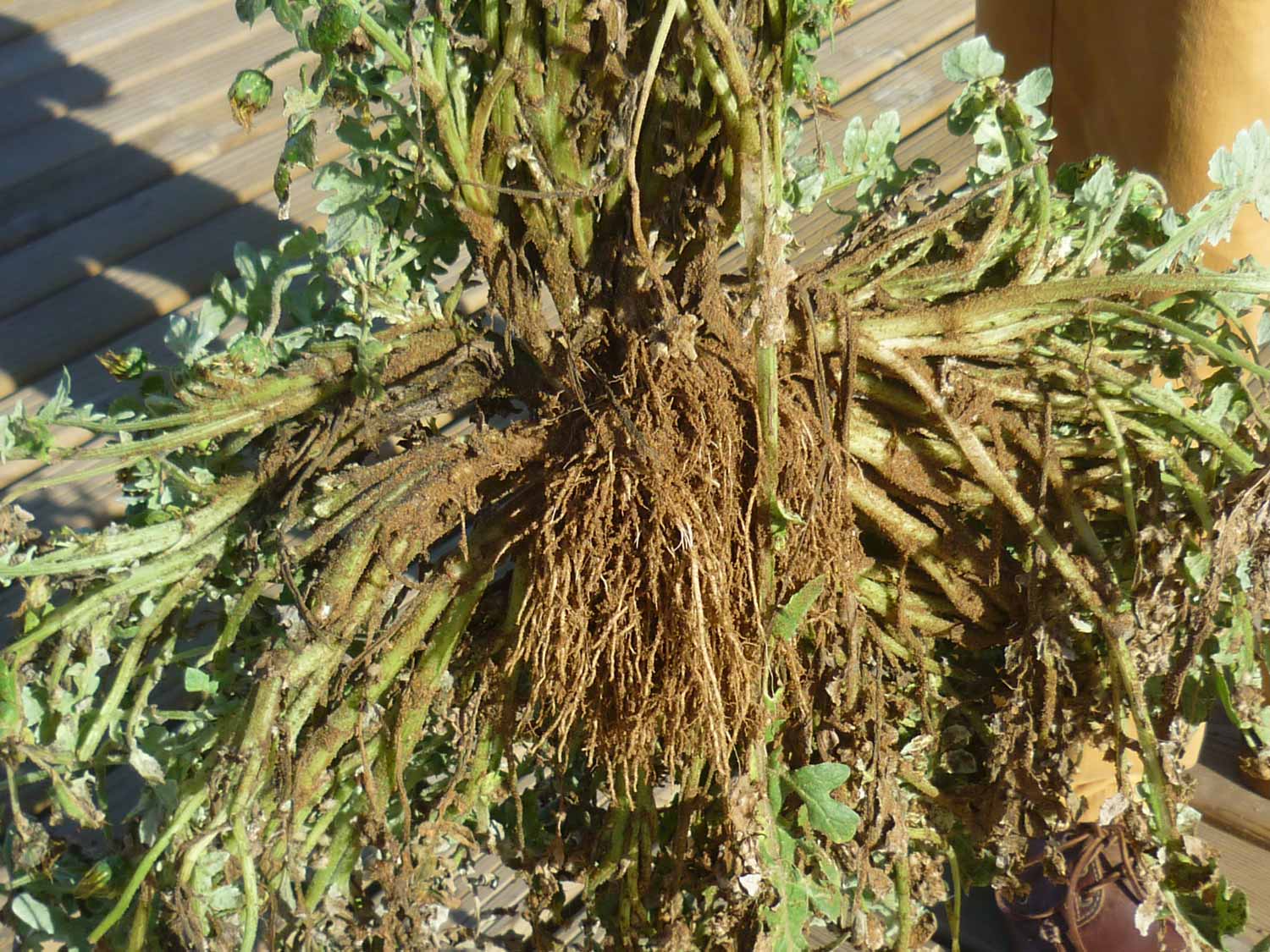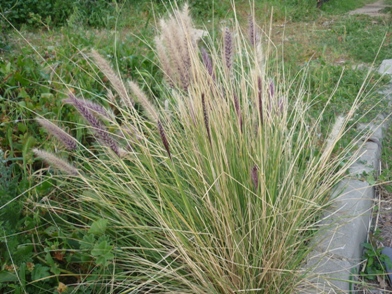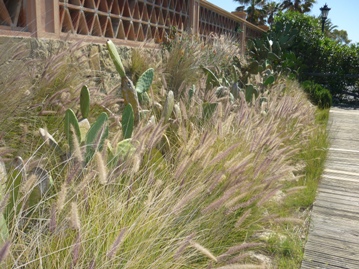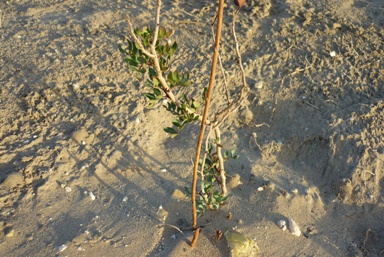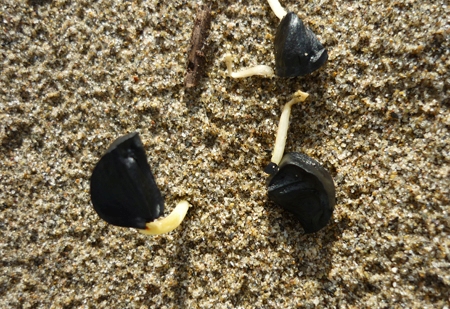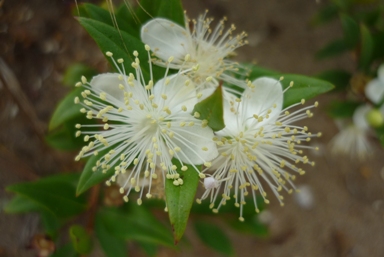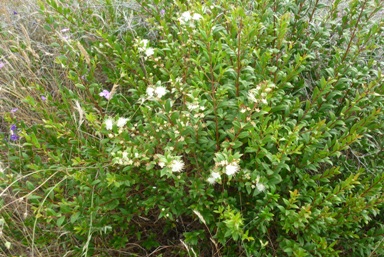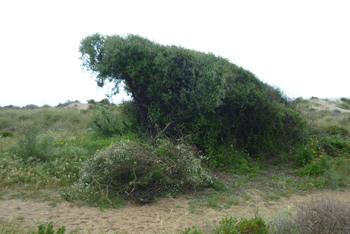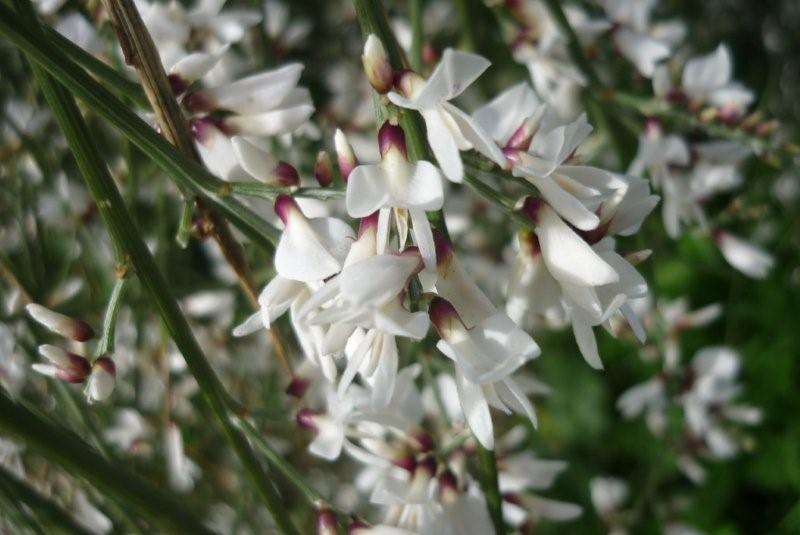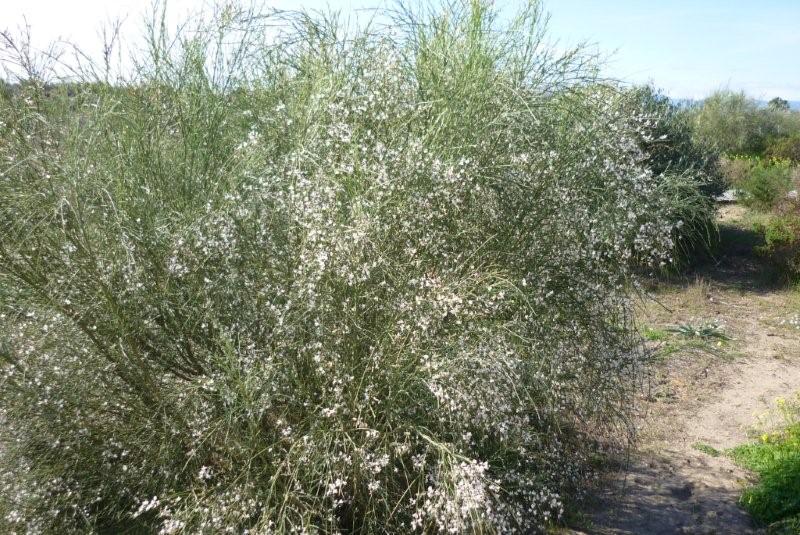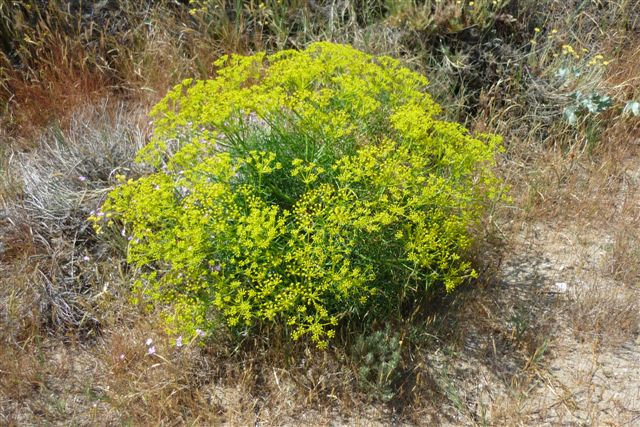THE FLORA
NEWS ABOUT THE FLORA OF OUR DUNES.
Fotografías e identificación hechas por la Asociación ProDunas.
December 2024 – Sea fennel, or sea parsley (Crithmum maritimum)
Sea fennel, or sea parsley (Crithmum maritimum), is the only wild edible plant of the Crithmum species found in southern Europe, especially on the Mediterranean coast where it grows wild. It is a perennial herb.
The plant has a thick central stem, which is protected by the remains of the previous year’s stems, and it extends upwards into a thick, herbaceous, glaucous and finally striated tortuous stem with white pith. The leaves are also glaucous, fleshy and stiff, with dilated corners like a sheath, and the blade is divided into three narrow segments. This plant has many branches and its leaves are strongly flavoured, reminiscent of celery, with salty overtones. It flowers around August and its berries ripen in the autumn.
An interesting fact: It is an anti-scorbutic plant. This is why, in earlier times, sailors on long voyages took with them a salt and vinegar marinade of its leaves.
And on the Catalan coast, when olives are marinated in addition to thyme, savory, oregano, etc., a few sea fennel leaves are usually added.
However, we advise getting to know and admire this beautiful plant, but leave it where you find it in the dunes. Currentl there is only one single plant remaining here; in the Calahonda dune.
NOVEMBER 2024 – DANGER – The Castor Oil bush (Ricinus communis) is POISONOUS
We are talking about one of the plants of the genus Ricinus, a shrubby plant of the Euphorbiaceae family.
The Castor Oil plant is native to tropical Africa. It has become naturalized in tropical and subtropical areas worldwide, thus becoming invasive. It produces many highly viable and highly poisonous seeds. However, anti-cancer compounds and castor oil, which is edible, can be extracted from this plant.
The Castor Oil plant, known locally as the “higuerilla” is a shrub with a large, woody, hollow stem that, like the leafstalks, veins and even the leaves themselves in some varieties, can turn a dark purple colour. It is usually covered with a white powdery substance, something like wax.
The leaves are huge, with palm-shaped venation, and are divided into 5 to 9 lobes, with irregularly serrated edges. The flowers are arranged in large, upright inflorescences. The female flowers are found at the top of the panicle, with an ovary formed by three carpillar leaves and topped by a trifurcated pistil, with papillae specially shaped to capture pollen. It blooms almost all year round.
The berries are globular, three-lobed, always covered by abundant spikes which give it a bristly appearance; it produces an outgrowth which contains ricin, which is the toxin. The Castor Oil plant is a serious threat to native species, habitats or ecosystems. It was included in the Spanish Catalogue of Foreign Invasive Species (FIS), regulated by Royal Decree 630/2013, dated 2nd August of that year. Its possession, transportation, trafficking and commerce as well as its introduction into the natural environment are all forbidden.
In the dune ecosystems of Marbella we have been eradicating this plant for many years because it is a foreign invasive species (FIS).
It is one of the most powerful biological toxins known.
MAYO 2023
Encontrada nueva especia exótica invasora en el Monumento Natural “Dunas de Artola”
Esparraguera bastarda (Asparagus asparagoides)
Interesante información proporcionada por nuestros Voluntarios de ProDunas Marbella y de la UMA.
Han localizado a esta especie de angiosperma, perteneciente a la familia de las Asparagaceae. Es nativa del sur de África. Es nombrada especie invasora tanto por el MITECO como por la UMA. Es una de las principales especies invasoras de Australia y Nueva Zelanda. Asfixia la vegetación nativa con su espeso follaje y con las raíces que forman tubérculos que restringen el crecimiento de las raíces de la flora nativa.
En España está incluida en el Catálogo Español de Especies Exóticas Invasoras (Real Decreto 630/2013 de 2 de agosto), por lo que se la considera una amenaza grave para las especies autóctonas y los hábitats.
La reproducción ocurre por dispersión de semillas por transporte de un animal al alimentarse de sus frutos y por reproducción vegetativa de su sistema radicular.
Autores: Manuel Zafra y Samuel Millán
August 2022 – Tumbleweed (Salsola kali)
This is a very important plant in the dune ecosystems. It adapts well to high levels of salt in the soil and tolerates flooding by seawater; it also has underground reserve organs. This makes it ideal for colonising sandy areas high up on the beach where the soils are not well established. It is here that, as it grows, it traps sand and allows small isolated hummocks or mounds of sand to begin to form. If other plants such as Marram Grass (Ammophila arenaria) or other grasses develop in this area, the hummocks may group together to form an embryonic dune ridge. However, Tumbleweed is an annual species, so the hummocks it forms do not usually last long or form stable embryonic dunes by themselves.
As it is a pioneer species, it is the first to colonise nutrient-poor land, preparing the soil for other species to develop. This is the reason its presence in dune areas is so important, so much so that its ability to adapt also makes it a good species for restoring disturbed or fallow soils. As mentioned above, this species tolerates salinity very well. In fact, due to its high sodium content, its ashes used to be used to produce soda (for making soap).
This species also stands out because of its unique way of dispersing seeds. It is of medium size, about 10 to 60 cm and very branched from the base which remains close to the ground. Every year, after flowering and producing seeds, it dries up and takes on a round shape. The wind is able to uproot it from its base on the ground and start it rolling, thus scattering its seeds. This picture will be familiar to us from many Western movies. This road runner was introduced into America (among other places) from Eurasia in the 19th century.
At first sight this is not a showy or pretty plant because of its sharp green or reddish leaves, however its role is vital to the health and dynamics of our dune ecosystems. That is why ProDunas Marbella emphasises its importance and encourages you to seek it out it during the months it is in flower. From May to November we can enjoy its vibrant reddish colour that gives it a very special character among the paler tones of the dunes.
March 2022 – Sea Holly (Eryngium maritimum)
The Sea Holly is a member of the carrot family (Apiaceae). It can be found everywhere in the Ecological Reserve. It is highly adapted to developing in sandy soils and with its extensive, deep roots it helps to form the dunes. That is why we are asking you to learn more about this important species that will begin to bloom around June.
It is a perennial plant that blooms in summer. After flowering, it dries up and then redevelops from underground structures the following spring. It is unmistakable, unique and easily recognizable. As it can weather strong winds and is highly tolerant of salinity and can manage without water, it thrives in those dune areas most exposed to the wind, where the soil is still mobile and poorly developed, such as in the embryonic and semi-stabilised dunes. In spite of growing in the first phases of the dune system closest to the shore, it does not tolerate large amounts of water if these flood the soil.
Other ways to recognise it are by its whitish and bluish stems at the topmost part which form several branches. Its leathery (tough) leaves are wider than long, are pale green in colour and have very marked nerves. These end in strong thorns. The flowers are small and come in shades of blue and are grouped in sub-spherical umbels. The flowers are accompanied by sharp structures called bracts. Since the plants are so close to the sea, the seeds can be dispersed by the water but they also use vegetative reproduction from an underground woody root to colonize their environment.
This species is always present in dune ecosystems not only round the Mediterranean, but also in areas of the Black Sea and the west coast of Europe. Despite being considered a species of “least concern” by the IUCN (International Union for the Conservation of Nature), in dune areas of Poland and Latvia a population decline has been observed. This is mainly due to human pressure, the abundant rains that flood the soils and its low genetic variability as a result of frequent vegetative reproduction. This last factor also makes its conservation difficult.
Although it does not need any special protection, because of to its importance as a species that contributes to stabilisation or consolidation the dune structures even in the most exposed areas, we must appreciate this species and protect it. That is why we encourage its role in the restoration of the dunes and monitor its presence to detect changes in the number of plants or in its presence on our dunes.
Main sources of information, bibliography, for this section:
Diputación de Málaga, Senda Litoral. (2022), Especies litorales de la provincia de Málaga, Cardo marítimo Eryngium maritimum. Disponible at: https://www.malaga.es/es/turismo/naturaleza/lis_cd-9995/cardo-maritimo-eryngium-maritimum-senda-litoral
Francisco Gálvez, Flora vascular, Eryngium maritimum. Disponible at: https://www.floravascular.com/index.php?spp=Eryngium%20maritimum
Hibilik, Nawal & Selmaoui, Karima & Touati, Jihane & Chliyeh, Mohamed & Ouazzani Touhami, Amina & Benkirane, Rachid & Douira, Allal. (2016). Mycorrhizal status of Eryngium maritimum in the mobile dunes of Mehdia (Northwest of Morocco). 4. 35-44.
Ievinsh, Gederts & Andersone, Una & Samsone, Ineta. (2020). Demographics of an endangered coastal plant, Eryngium maritimum, near the northeast border of the distribution range in relation to clonal growth. Environmental and Experimental Biology. 18. 117–127. 10.22364/eeb.18.11.
José Antonio Lopez Espinosa, Región de Murcia digital, Hierbas y matas: Cardo marítimo, Eryngium maritimum. Disponible at: https://www.regmurcia.com/servlet/s.Sl?sit=c,365,m,1050&r=ReP-5122-DETALLE_REPORTAJESABUELO
La Vega de Seoane, Gallego Fernández & Vidal Pascual (2007) ‘Ecología’ Manual de restauración de dunas costeras. España: MITECO, pp. 75-109.
December 2021 – Did you know that the White Broome attracts a small moth of the Pyralidae family?
It lays its eggs on the leaves and they hatch out to become tiny caterpillars, the Uresiphita gilvataes that we noticed there.
During this autumn we spotted that the branches of the Broome were covered in hundreds of tiny eggs. When the caterpillars hatched out we were surprised by their elegant colouring – we had to study them for a long time to become aware of this. They had both a yellow and a light turquoise blue stripe, and black spirals on their sides from which long white hairs were growing. Nature is smart. She creates colourful designs which stop us in our tracks.
The moths, on the other hand, have very discreet colouring on their triangular wings. They do not grab your attention, as they are brown, with shades of ochre, orange or copper – brilliant camouflage.
The experience and study has been worth it! Until the autumn of 2022. . .
7 September 2021 – Pimpinella villosa has appeared in the Natural Monument “Dunas de Artola”.
When we were out on the Dunas de Artola on 7th September, we concentrated our attention on a fairly common plant there but which is not seen in other areas of the Marbella Dunes-Ecological Reserve.
We refer to the Pimpinella villosa, a species of the umbelliferae family that really is not typically found in dune vegetation. It is much more common over the rest of the Iberian Peninsula and in North Africa. As it usually goes unnoticed, it isn’t often given a local name, but here, among the ones we have heard are “furry pimpernel” and “pelitre”, the latter is most inappropriate because it is the name of a totally different plant from which a natural insecticide called pelitre or pyrethrum can be obtained.
Our pimpinella is a perennial plant that sprouts every year from its thick, woody, rough root. In spring it produces a pretty rosette of basal leaves very like those of the coriander plant. Then, in the middle of August the leaves dry up, giving up all their biological strength to the development of the flowers and the formation of seeds. The flowers are small, whitish and gathered in branched umbels. Finally, the seeds are formed. They are also small and hairy, hence its scientific name. Finally, everything disappears until the following spring.
Our protagonist belongs to the same genus as the well-known Matalahúga or anise (Pimpinella anisum), a species cultivated from time immemorial and which has numerous medicinal properties and widespread use in cooking and baking.
So: it is an almost unknown plant, and it doesn’t seem to have any known uses, but there it is, adding to the biodiversity of this ecosystem, and with the late development of its flowers it maintains the life of insects all through the worst of the heat, at a time when most species have long since finished flowering.
Author: Manuel Zafra Valverde
September 2021 – Carnation – Dianthus broteri or Dianthus malacitanus
What do we know about the Clavelina?
This species, which looks like a carnation, can only be found in the Natural Monument “Dunas de Artola”. It gives this dune an extra attraction and a unique character. We encourage you to go out to the Monument to see this plant during their flowering season, which is spring and early summer.
It is easy to identify it as stands out from the rest of the dune species. It is tall and has pink or white flowers. It is herbaceous with stems that can reach up to half a meter in height. These are erect and ascending, with few or simple branches. Its small leaves are found in the basal part of the plant. The flowers usually grow on their own, that is, they do not form groups around a stem, and they have very characteristic petals, ending in lacinias or fimbriae that give them a filamentous appearance, as if the edge of the petal had been grated. Its calyx is also characteristic being quite long, up to 30mm.
Later, in summer, the flower withers and only the calyx and stems remain, now a brownish-black colour. This contains the numerous black seeds.
These are very small and light but they are very important if we want to ensure that the species continues to exist in our dunes going forward. That is why ProDunas Marbella is trying to preserve the species. We want to introduce it in the rest of the dune environments and with it, guarantee its survival in these coastal ecosystems.
To deepen everyone’s knowledge of the floral richness in the dunes, we are organising workshops to identify the Andalusian vascular or land plants. With these workshops we aim to create more and more nature lovers, people who enjoy being in these spaces as they learn more about our iconic and extremely important species.
June 2021
THE RARE CACHRYS SICULA PLANT SHOWS UP IN LA ADELFA DUNE, Bahia de Marbella
Some moments in our lives have magnificent and unexpected surprises in store for us. This time it was the appearance of the beautiful, rare plant known as Cachrys sicula, (Common name according to the Junta de Andalucía: cañaé or cañaheja).
A few years ago we discovered it in the Natural Monument “Dunas de Artola” in Cabopino but we did not see it in any other dune – until today!
This plant, typical of dune ecosystems, gives them a bright yellow colour that fills the areas it occupies with joy. Recently it has appeared as a carpet, an explosion of enjoyment. It is a perennial plant that lives mainly in the southwestern Mediterranean area and grows among sub-nitrophilous shrubs and grasslands in sandy environments (dunes).
It looks like it should belong to the fennel (Foeniculum vulgare) and carrot (Daucus carota) family as they belong together, but when you get closer, the intense aroma of fennel is missing. Cachrys sicula is odorless, which is hard to understand. Its flowers are hermaphrodite, actinomorphic and pentameric.
It normally blooms between April and May, but this year it was still in full bloom at the beginning of June. We enjoyed this pleasant surprise and warmly welcomed Cachrys sicula.
March 2021
MUTUALISM AND SYMBIOSIS IN FALSE MIMOSA (Acacia)
We want to bring to your attention something really interesting we learned in the El Barronal de la Morena dune in Playas Andaluzas, El Rosario, when we were manually grubbing out regrowth of the false Mimosa (Acacia).
We know that these snippets of information about unusual names and processes are fascinating to the “man in the street”. They enrich our knowledge of the complexity of the components that go to make up and guarantee the creation and survival of nature.
Words to remember:
Mutualism
Symbiosis
Rhizobium
Bacteriorrizas
Brief explanation:
An example of mutualism occurs between nitrogen-fixing bacteria of the genus Rhizobium and the roots of leguminous plants. Bacteriorcins are formed by this symbiosis. In this association, the bacteria fix the nitrogen found in the air and which the plant needs for its proper development, while the plant provides shelter for the bacteria.
All legumes have small bubbles on the roots. Inside these are nitrifying bacteria that combine the biological oxidation of ammonium with oxygen to produce nitrite. Then follows the oxidation of these nitrites to nitrates (of the Rhizobium genus). This is known as symbiosis (Bacteriorrizas). This is where both organisms gain from the process. The bacteria are nitrogen fixers, the nitrogen feeds the plant and the plant in its turn shelters the bacterium. These nitrifying microorganisms use carbon dioxide as their carbon source to grow. For this reason, in overexploited soils it would be a very good idea to plant any one of the appropriate legume family to enrich the soil.
All legumes have small bubbles on the roots. Inside these are nitrifying bacteria that combine the biological oxidation of ammonium with oxygen to produce nitrite. Then follows the oxidation of these nitrites to nitrates (of the Rhizobium genus). This is known as symbiosis (Bacteriorrizas). This is where both organisms gain from the process. The bacteria are nitrogen fixers, the nitrogen feeds the plant and the plant in its turn shelters the bacterium. These nitrifying microorganisms use carbon dioxide as their carbon source to grow. For this reason, in overexploited soils it would be a very good idea to plant any one of the appropriate legume family to enrich the soil.
August 2020
BROOMRAPES (Orobanche rapum-genistae)
Today we are going to talk about the Wolf Asparagus, one of the Broomrape family. It is a very odd looking plant and has an odd way of life, as it is parasitic. This means that it gets all its nutrients from another organism (host), without providing any benefit in return. In the case of this species, the hosts are the members of the legume (bean)
It is probably a perennial species, with straight stems that can reach up to 70 cm, with brown or yellowish flowers that grow in dense multi-flower bunches. The species of the Broomrape genus are difficult to organize taxonomically and as they are parasitic, this work is complicated by their lack of distinguishable characters. In the different dune ecosystems the Ramosa Broomrape can also be found, sometimes smaller and with blue flowers, and can parasitize a wide spectrum of plant species.
Flowering usually occurs between April and July, but it seems that this year, because people haven’t been out in the dunes, with therefore less anthropological pressure on nature, the plants have run riot and overflowing has got under way.
May 2020
Do you know the CENTAUREA SPHAEROCEPHALA, (Common knapweed) which has introduced itself in several dune areas of the Ecological Reserve?
It is a very unique dune plant!
It is easily confused by schoolchildren with the African daisy (Arctotheca calendula) schoolchildren, although the differences between the two plants can be easily shown to them. The undersides of their leaves are very different. Both the upper and lower sides of the Centaurea sphaerocephala are of a vivid green, while the invasive African daisy has a silver underside, a colour produced by the multitude of whitish hairs that cover it.
In recent years, Centaurea sphaerocephala has begun to settle in different dune ecosystems. It is a perennial plant. It is somewhat prickly due to the presence of sharp hairs on its leaves and stem. This characteristic allows it to defend itself very well against predators, allowing it to attain a good size.
With its presence it contributes to an increasing floral diversity in the dunes. We are delighted with it.
April 2020
WHAT ARE FOREIGN INVASIVE SPECIES AND WHY ARE THEY INVASIVE?
Foreign invasive species are those species not native to an area and which have been artificially – accidentally or intentionally – introduced into an ecosystem other than their own. These species can adapt to the environment to which they are introduced and colonise it. Their invasive behaviour endangers indigenous biological diversity since indigenous species may not possess the necessary mechanisms to compete with them and because of this suffer displacement or even extinction.
Invasive species, having no competitors, can develop numerous reproductive individuals that bear seed with great success, which contributes to their expansion. In addition, many of the invasive species have vegetative forms of reproduction such as rhizomes or stolons that increase their colonisation capacity.
The following are some of the foreign invasive species that can be found in the Marbella dunes: Pampas Grass (Cortaderia sealana), Purple Fountain Grass (Pennisetum setaceum), Century Plant (Agave americana), False Mimosa (Acacia saligna / Acacia salicina), Giant Reed (Arundo donax) and Yuca (Yucca aloifolia) and of course Highway Ice plant (Carpobrotus edulis) and the Cape dandelion (Arctotheca calendula). These are listed in the Spanish Foreign Invasive Species Catalogue, published on 2nd August 2013 by Royal Decree n° 630/2013.
The coastal habitats with dunes are the ones that present the greatest number of invasive naturalised species (those that have managed to adapt to the environment they colonise) of tropical or subtropical origin. The strong human pressure because of the urban development over the last 30-40 years has contributed to the introduction, in many cases from gardens, of foreign invasive species, thus helping to cause the unfortunate degradation of the dune vegetation.
MARCH 2020
THE ETERNAL QUESTION – LOTUS CRETICUS vs MEDICAGO MARINA
Is it the Bird’s-foot Trefoil (Lotus creticus) or the Sea Medick (Medicago marina)?
Both species are very similar, not surprisingly as they belong to the same family of plants: legumes (leguminosae). This family is distinguished especially by having:
- Legume type berries
• Compound and stipulated leaves
• Butterfly-like flowers (from French word for butterfly (papillon)
Right here the main differences between them can be found.
The Bird’s-foot Trefoil (Lotus creticus L.) can grow flat along the ground or upright since it has a strong woody base. Its stems are branched. The leaves are in parts, with 5 leaflets that have a whitish tomentum (hairs on the surface). The upright parts of the flowers are almost twice as big as the base. The flowers are yellow, with slightly darker veins and a purple part at the tip of the base. Its berries are long (between 20 and 50 mm) and straight.
The Sea Medick (Medicago marina L.) is generally decumbent (that is, lying flat on the ground). The stems are simple, not branched. The leaves still come in parts, with between 4 and 9 leaflets, but the hairs are bigger and can be found on both sides of the leaf. The flowers are smooth and yellow with an upright part noticeably larger than the base and wings. Its berries, despite being legumes, are curled into small spirals with conical spines, leaving a central opening.
Lotus creticus (Bird’s-foot Trefoil) is much more common in the dunes of Marbella. Finding a Medicago marina (Sea Medick) is very difficult. It is normally found in grasslands and in thickets on the dunes and in coastal sand. They are important plants in embryonic (mobile) dunes because they help hold on to the sand and thus let the dune develop. They are very well adapted to the environmental conditions of the dune ecosystems, thanks to structures such as the whitish tomentum (hairs) that defend the plant by reflecting part of the solar radiation.
AUGUST 2018 – THE SEA DAFFODIL (Pancratium maritimum)
It’s fresh beauty is an inspiration to us all but all it wants is to be left where we find it, in its habitat. It wilts quickly if you pick it and put in a flower vase, even with water.
It develops very slowly from seed. It can take up to 3 years to flower, but when the petals open it is like an explosion of white all over the dunes.
All you can think of is peace and happiness when you come across it . . .
MAY 2018
The GREAT or COMMON MULLEIN (Verbascum thapsus)
This plant has established itself in the dunes even though it comes from Europe. It likes both the sandy soil and the Costa del Sol climate, and there are more and more plants every year. In these spring-and early summer months it is eye-catching because it is so beautiful and stands so tall – up to 2 mt. Its leaves are delicately furry to the touch and its fresh yellow flowers are grouped stem-up.
Interestingly, very few people know of its therapeutic properties – although in the countries farther to the north of Spain the plant and especially its petals are used for medicinal purposes. The dried flowers are used to make infusions that in cold weather are said to protect against colds, flu and chesty coughs.
The medicinal virtues of this plant were known in the ancient world. It is an interesting plant for botanists.
JUNE 2016
SEA ORLAYA or DUNE CARROT (Pseudorlaya pumila)
This small umbelliferous or apiaceous plant (it carries its flowers in an umbrella-shaped cluster) is being closely studied by 2 eminent botanists of the Universities of Alicante (Spain) and Michigan (USA) along our Dunes ecosystems (13km), from the Natural Monument “Dunes of Artola” to the Marbella Dunes Ecological Reserve.
It can be found in sand soils and dune areas.
The whole plant is covered with stiff little hairs. The flowers can be either red or white and the seeds are covered with prickles. It blooms in spring and early summer.
This interesting plant belongs to the apiaceous/umbelliferous family and is a member of carrot sub-group.
APRIL 2016
PROLIFERATION OF THE AFRICAN DAISY (Arctotheca calendula) IN THE NATURAL MONUMENT “DUNAS DE ARTOLA”, CABOPINO
The construction of the pedestrian boardwalks in this dune area has resulted in damage to the sandy soil and has favoured the explosive propagation of the plant listed by the Ministry of Environment as invasive. There is a risk of altering this until now intact area.
In principle the plants are spread by seeds, which can cause a large quantity of regrowth from rhizomes or tubers. Dispersion is mainly anemochorous (by the wind) and also zoochorus (by animals). The seeds have a latency period so they can germinate with autumn rains. As the African Daisy is aggressive and can crowd out the native species such as:
Sea Daffodil (Pancratium maritimum), Sea Holly (Eryngium maritimum), Birds’ Foot Trefoil (Lotus creticus), Maritime Stock (Malcolmia littorea) etc. Prompt action is advisable to prevent its uncontroled development.
The Ministry for the Environment has entrusted Pro Dunas to organise Eradication Days to contain its possible spread throughout the entire Natural Monument area.
Pro Dunes calls for Citizen participation, so that working together we can eliminate this harmful species. To set Eradication Days that suit you, please call us on: 609 600 706 or contact us by email:
asociacion@produnas.org
MARCH 2015
CAMPAIGN TO CONTROL AND ERADICATE THE INVASIVE EXOTICSPECIES: PURPLE FOUNTAIN GRASS (Pennisetum setaceum)
The Ministry of the Environment is counting on our urgent help to maintain strict control over the mistaken introduction of thisinvasive perennial plant to the environment. It is very harmful because of its rapid proliferation.
For many years our Association has been controlling the spread of this species in thedune areas in the Municipality of Marbella. We can certify that it grows in only onearea as a result of private introduction into the “La Adelfa” dune in Bahia de Marbella.
Pennisetum setaceum is an ornamentalplant and because of its beauty is often planted in private gardens. Unfortunately itis easily spread by the wind. It is all over the roadside of the N-340 motorway andthere is a lot of it in Marbella’s public parks.
OCTOBER 2012
FEBRUARY 2012
SEA DAFFODIL (Pancratium maritimum)
It can be found in all the sand dune areas of the municipality of Marbella. Flowering is from August to October. The leaves are green before flowering, and wither with the flower. The sea daffodil dies when cut off, so it does not survive in a vase.
The seed is abundant. Its colour is black, and it is very much like charcoal, both to the touch as in appearance. Propagation by seeds is easy in windy weather, which favours its development in coastal sands.
JUNE 2011
MIRTO (Myrtus communis)
Young plants were introduced into the sand dunes “La Adelfa” Bahía de Marbella, Marbella in the year 2005 and flourished for the first time in June of 2011. They thrive in sand dunes and the undergrowth of pine and oak woods.
It is considered a “Symbol of Love and Beauty”, and its leaves, flowers and fruit are used in perfumery for their wonderful fragrance.
MAY 2010
Actions for the conservation of the dunes area “La Adelfa” – Bahía de Marbella
Due to unauthorized prune by third persons, technicians of the Provincial Department for the Environment have carried out conservations actions and cleaning work in this beautiful specimen of Wild Olive tree. This olive shrub represents a high value for the natural heritage of the residents and Marbella
FEBRUARY 2010
RIDAL VEIL BROOM – (White Retama monosperma)
This shrub blossoms for the first time!
Since it was planted in the dunes of Bahia de Marbella in the year 2006.
Its white butterfly shaped flowers give off a delicate fragrance and represent a delicious lure for the small wild birds
MAY 2009
Do you want to receive our Newsletter?
Do you want to become a member or be our friend of the dunes?
Asociación ProDunas Marbella
La Asociación trabaja incesantemente en defensa y preservación de los singulares ecosistemas aún existentes en los entornos naturales con dunas en la Provincia de Málaga; impulsa la protección de su flora autóctona y pequeña fauna silvestre; fomenta la recuperación, rehabilitación y conservación de la interesante biodiversidad en las zonas dunares del municipio de Marbella.
+34 609 600 706
comunicacion@produnas.org

